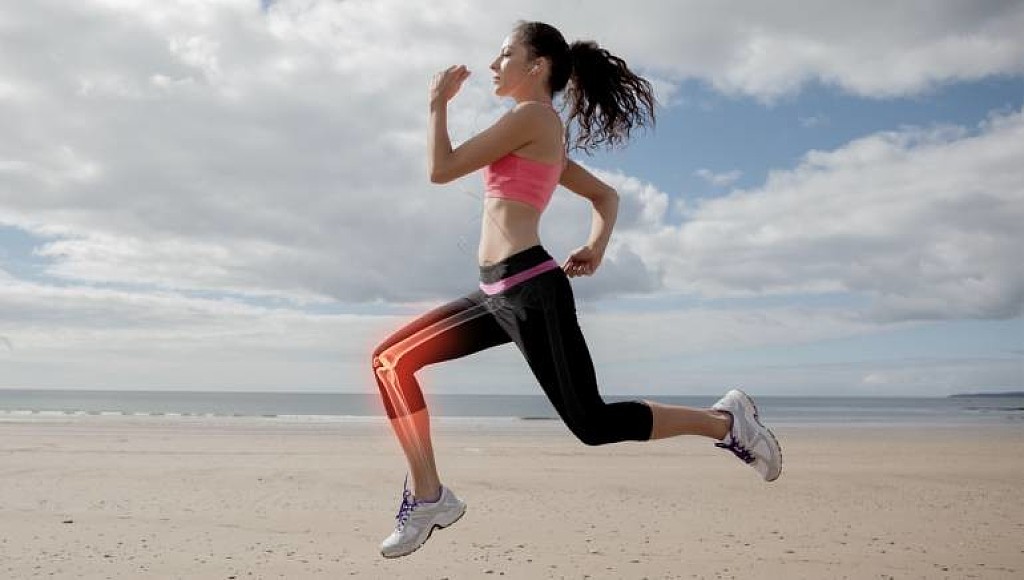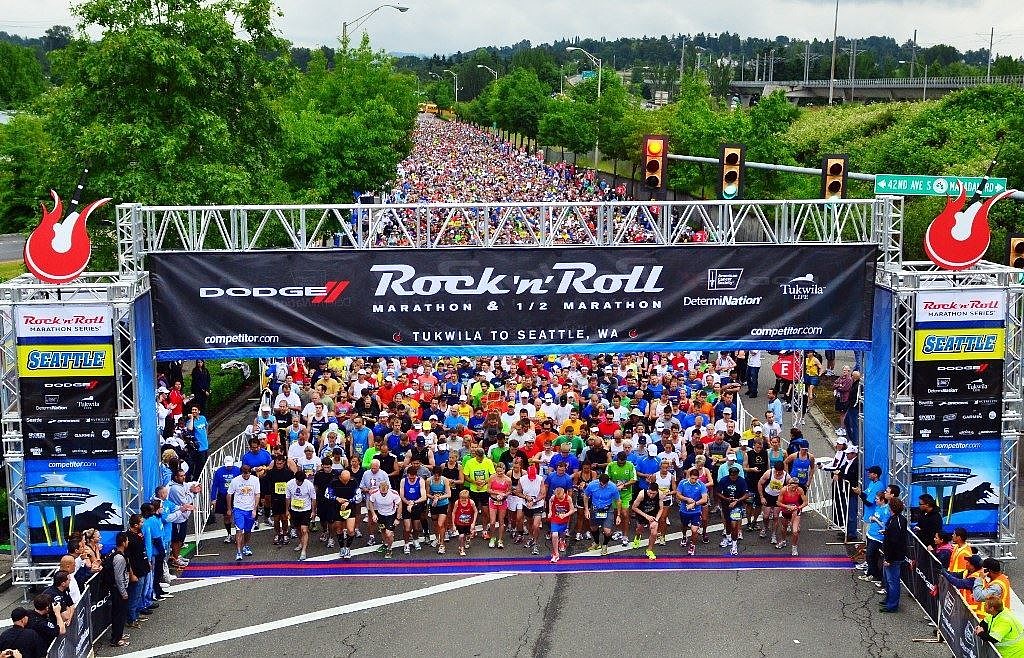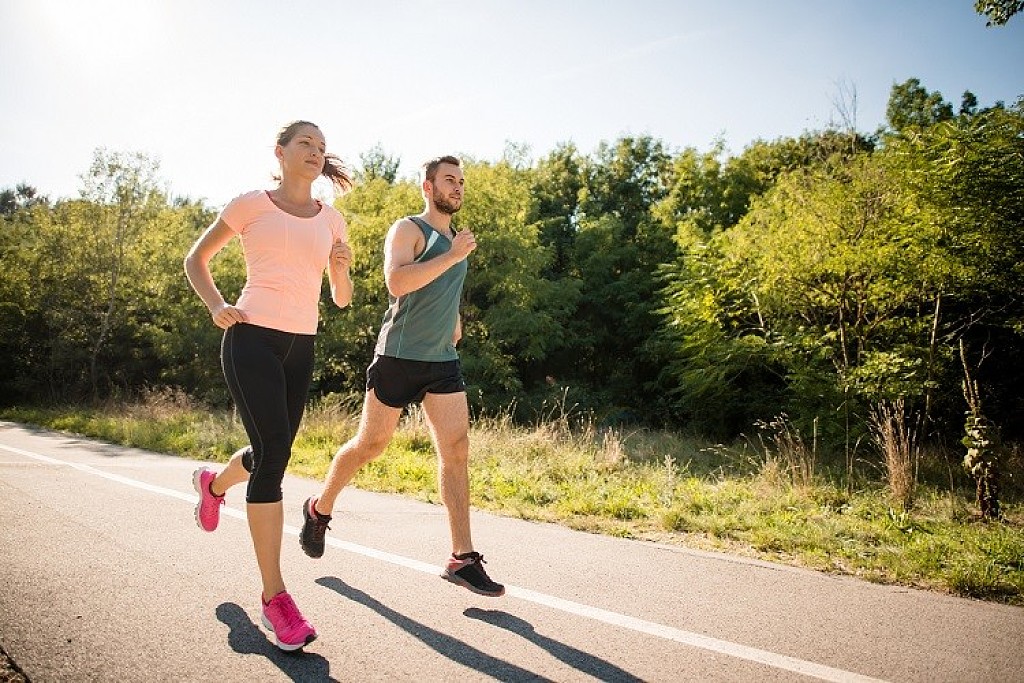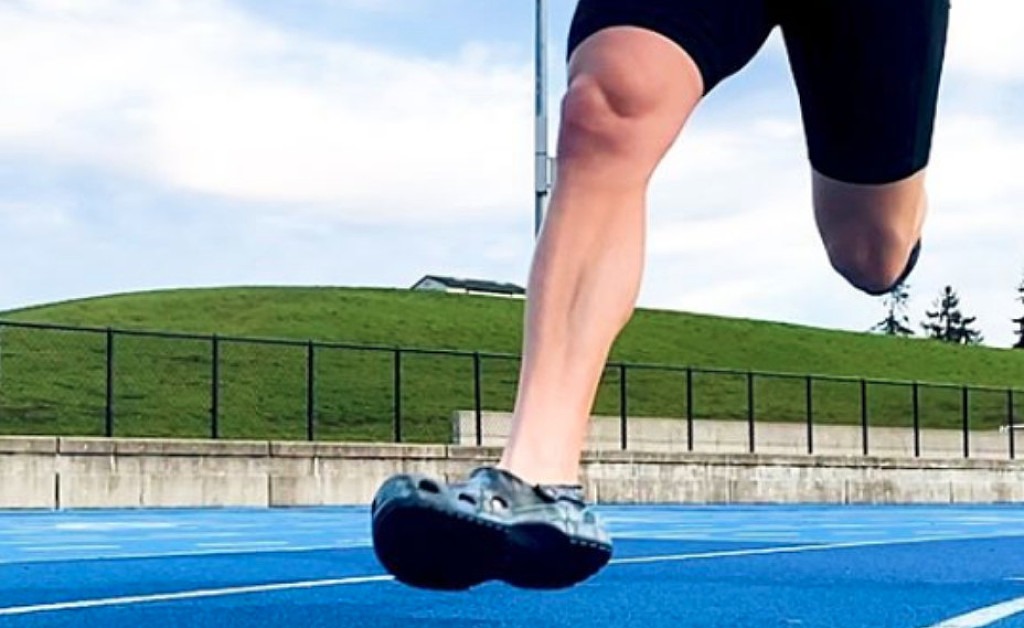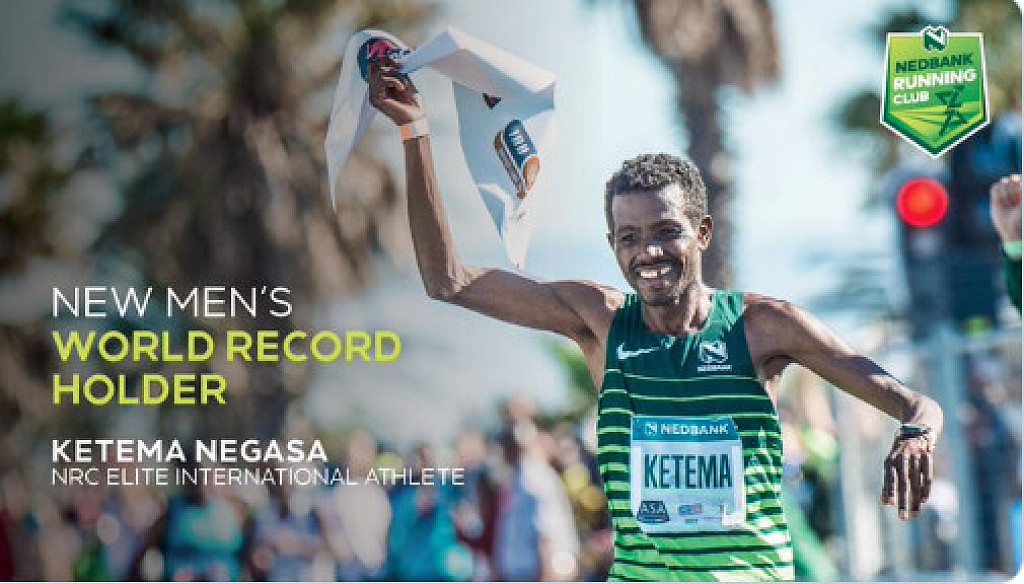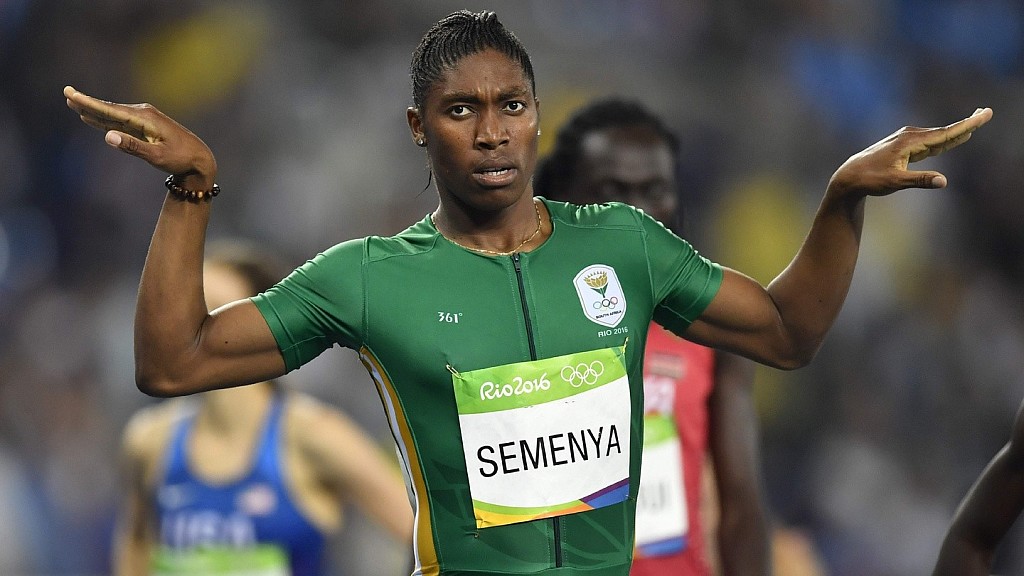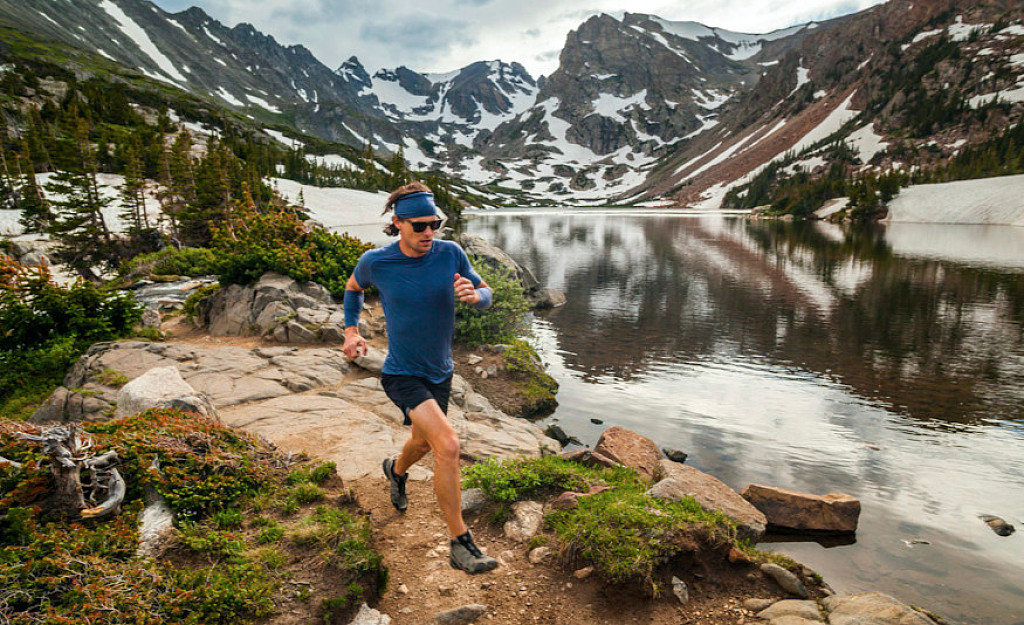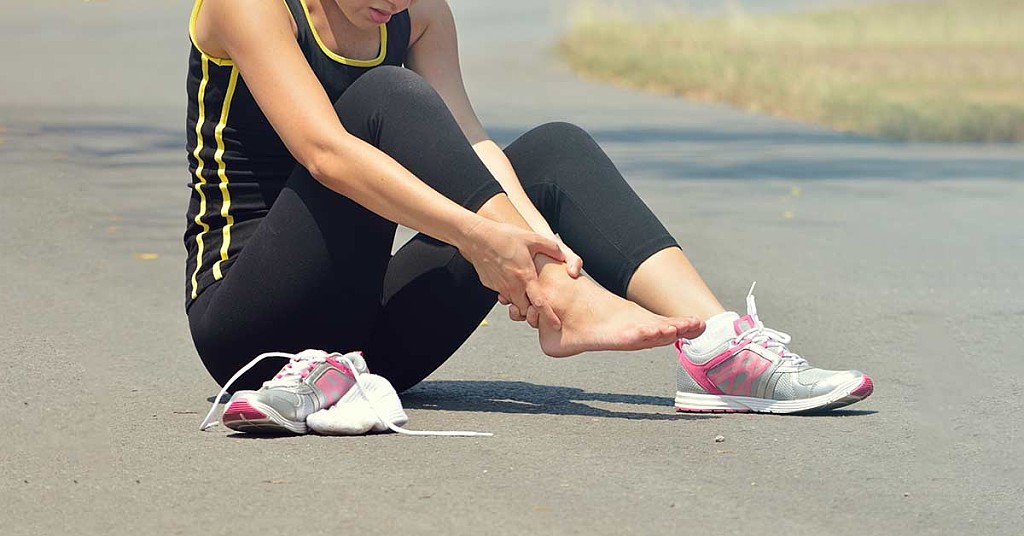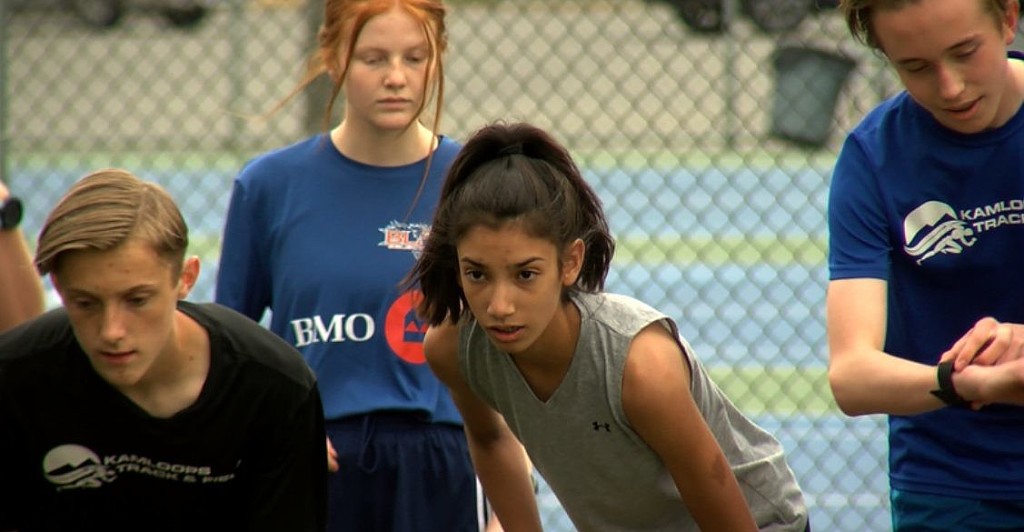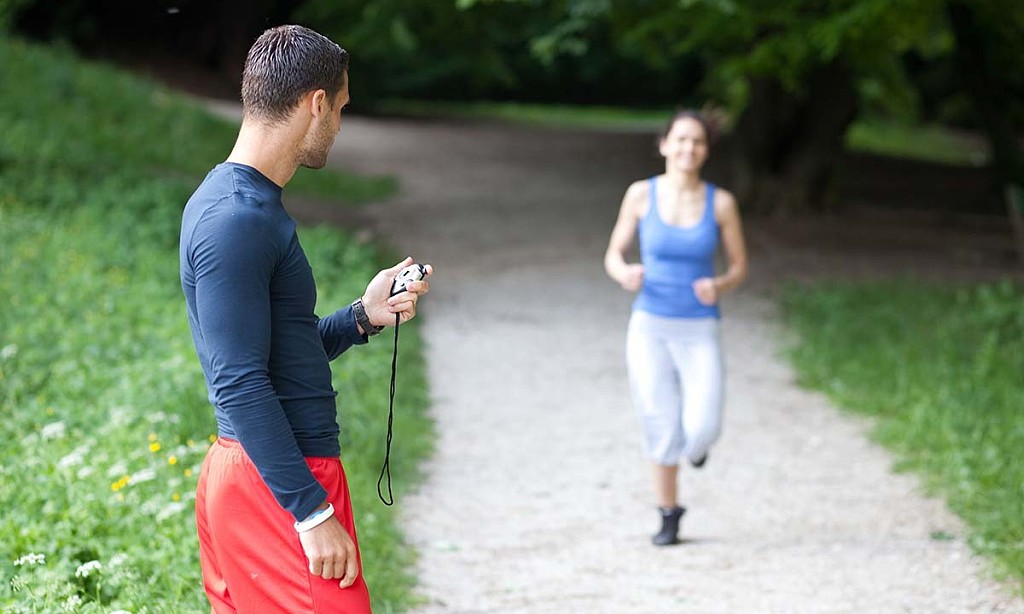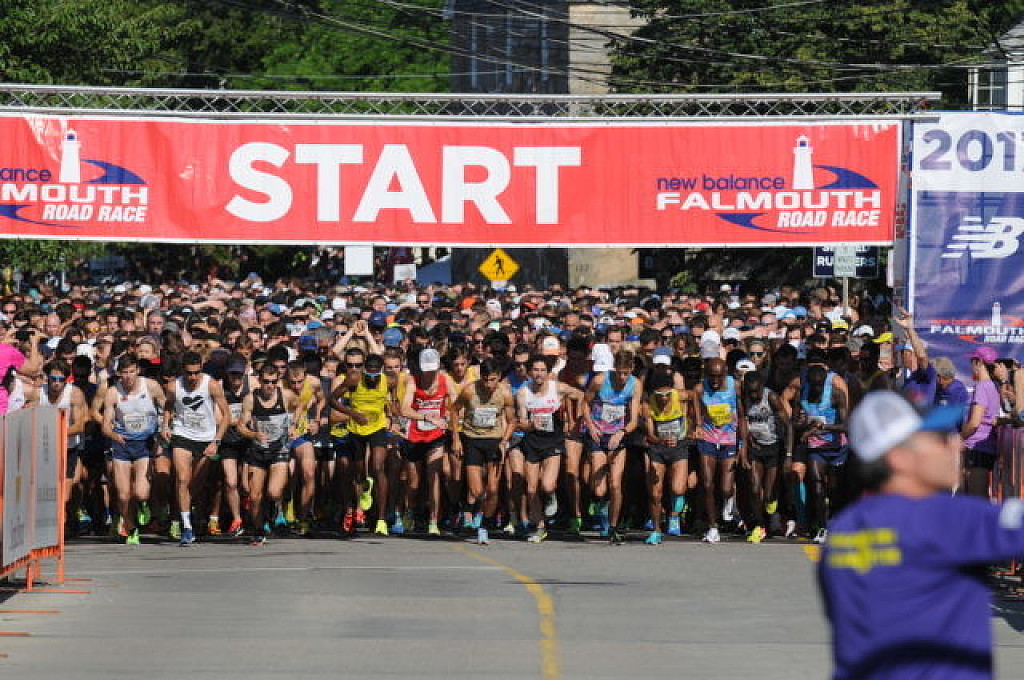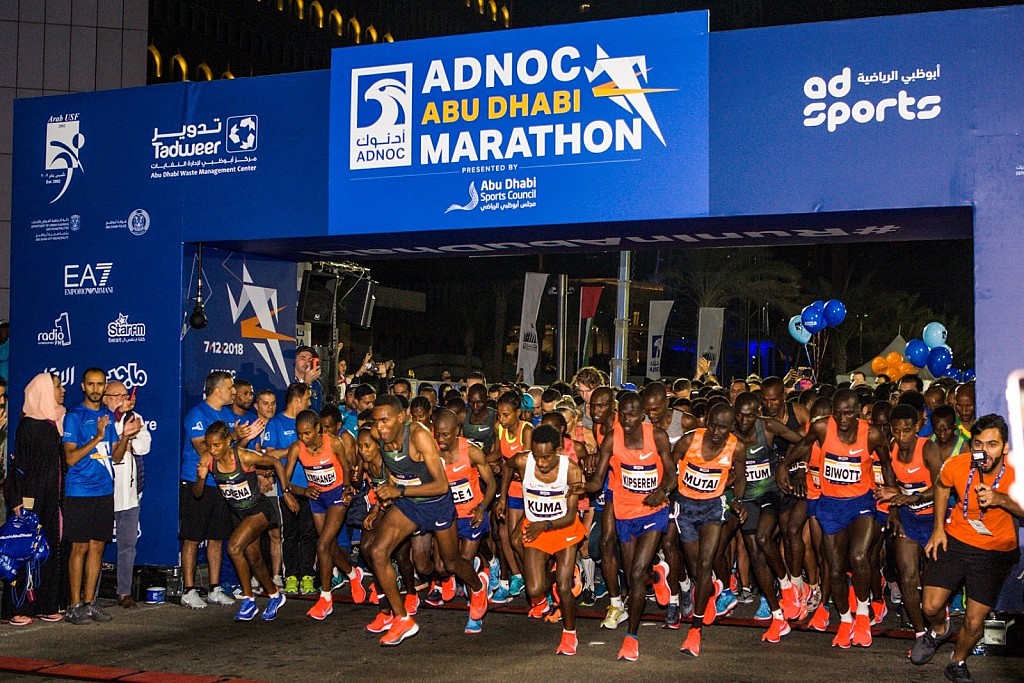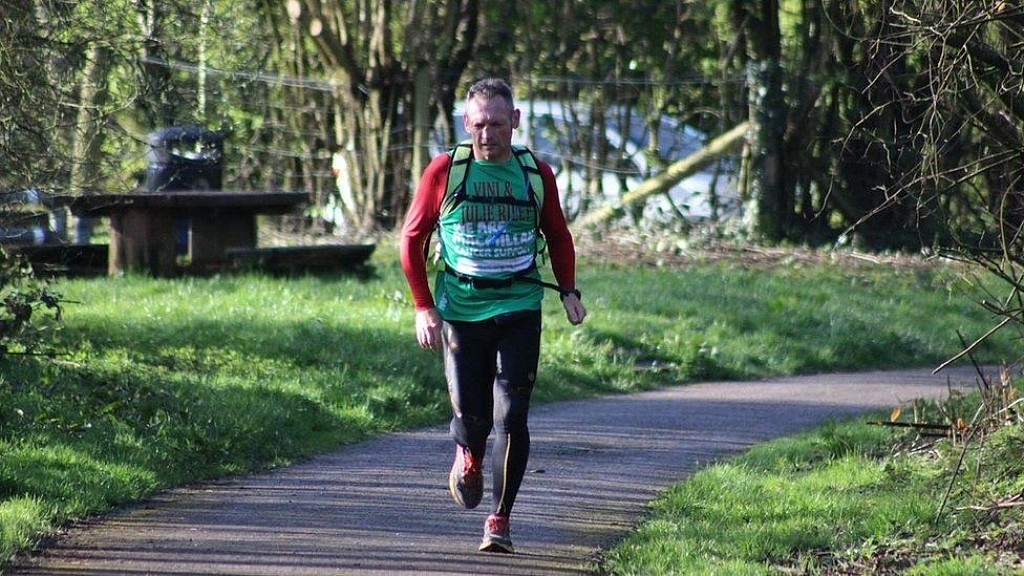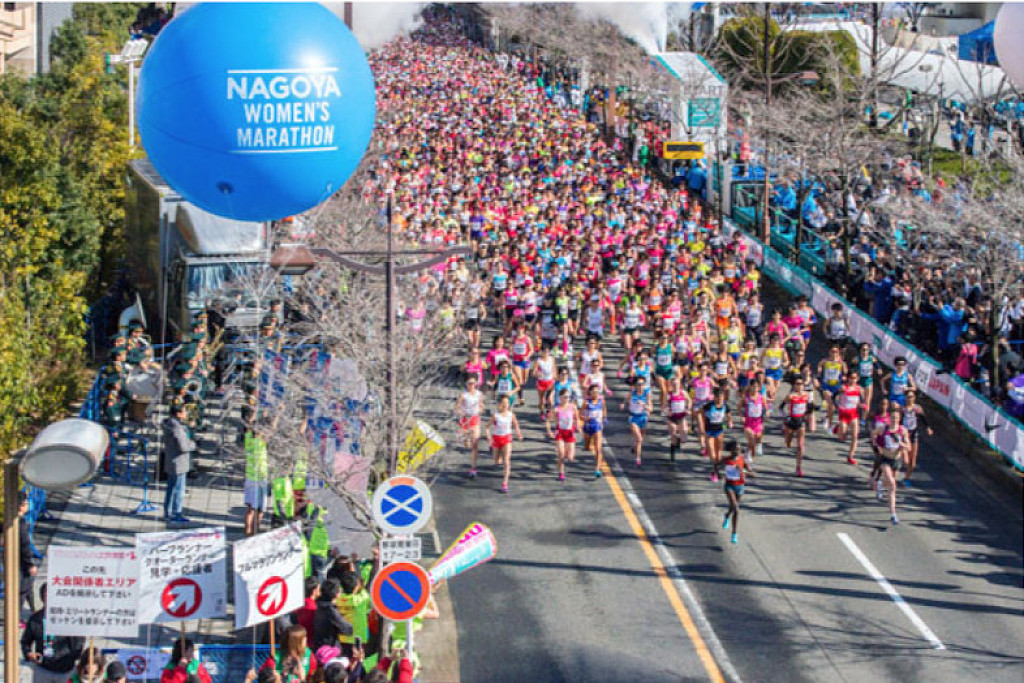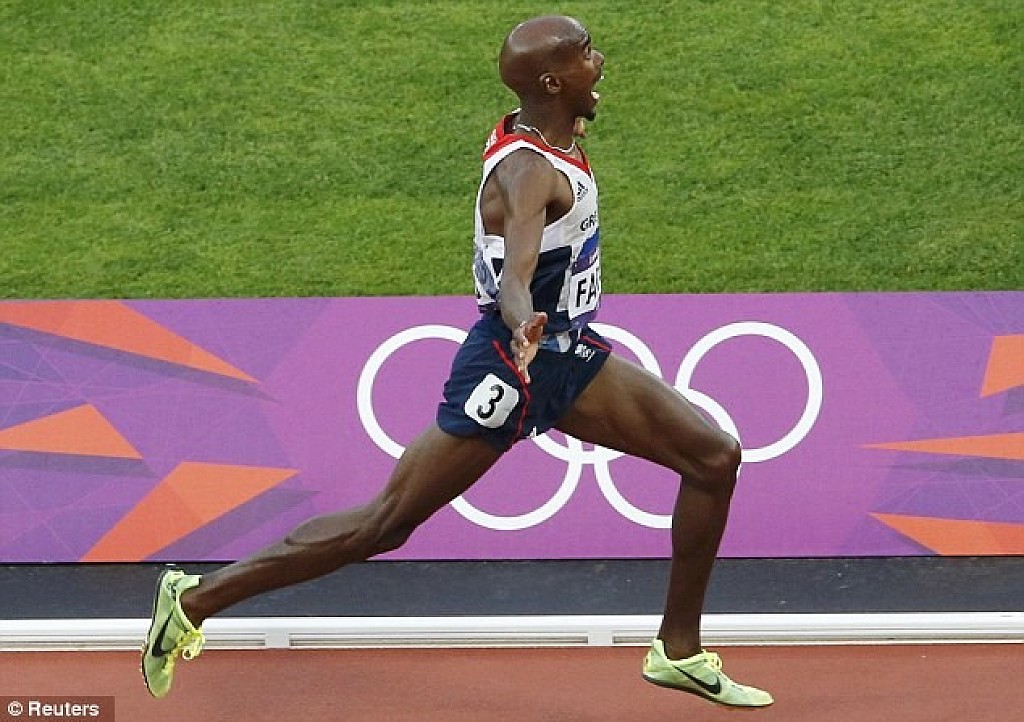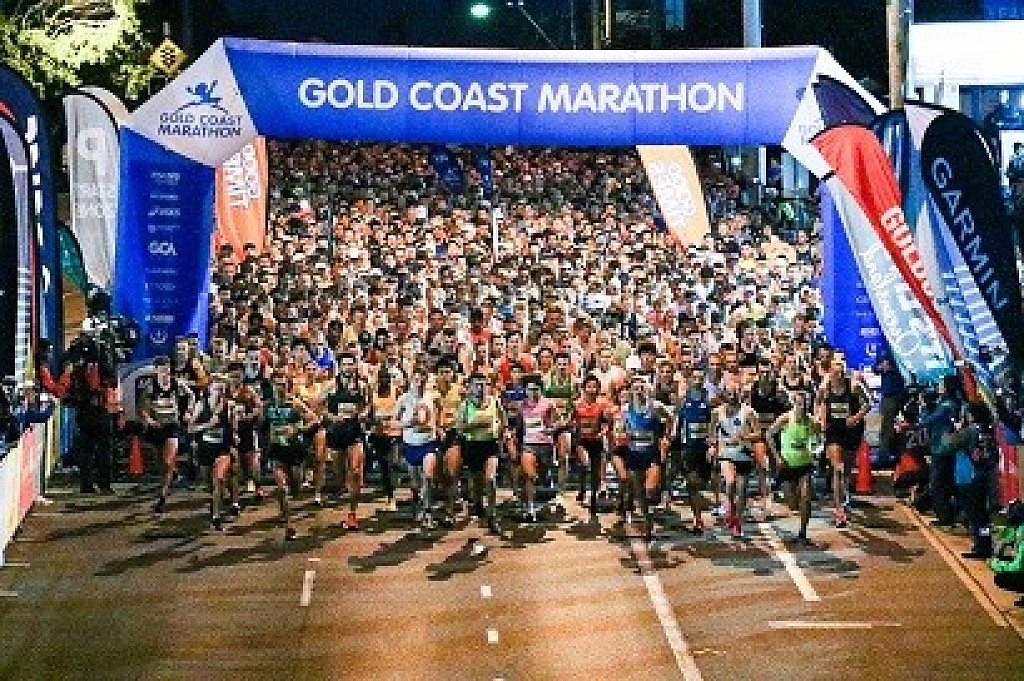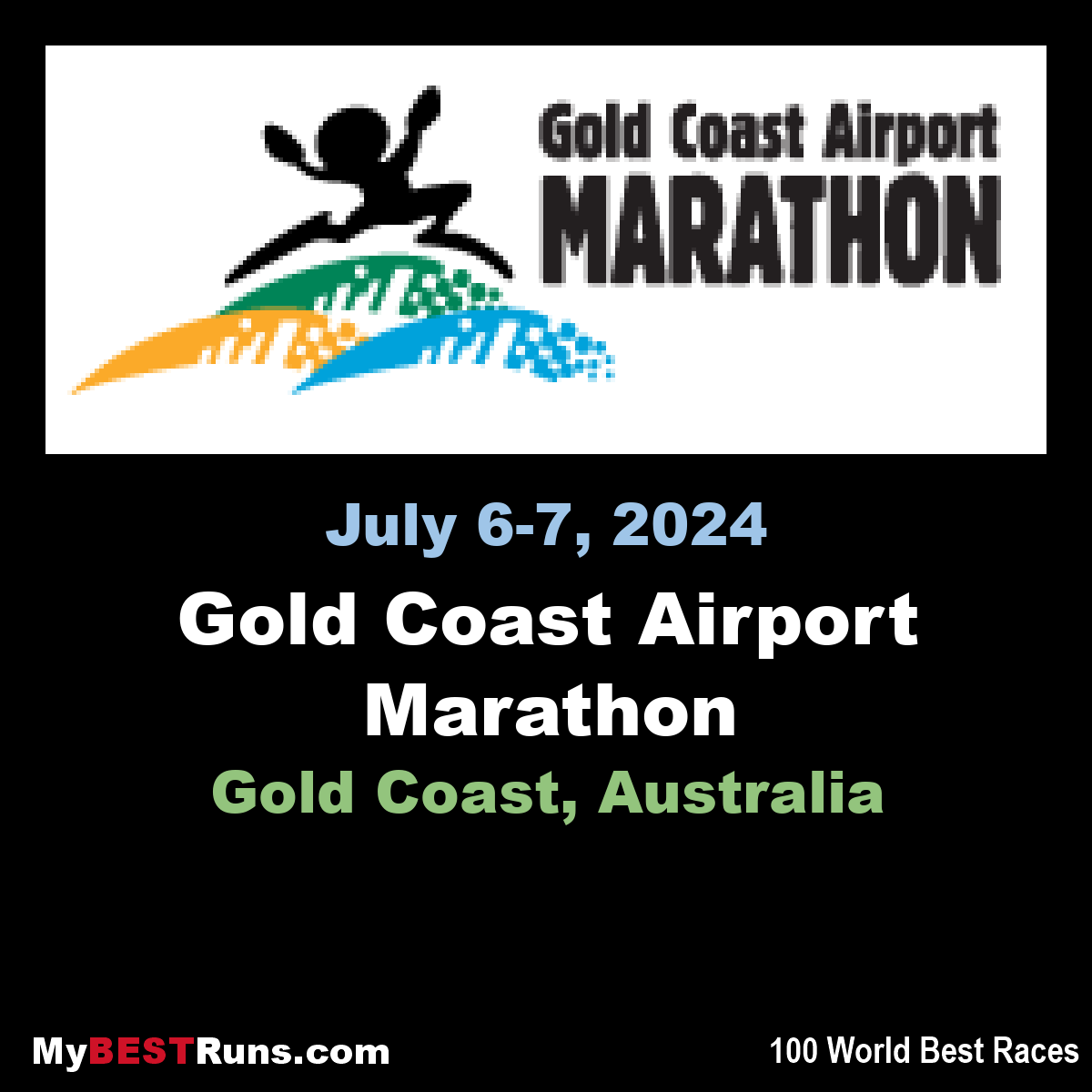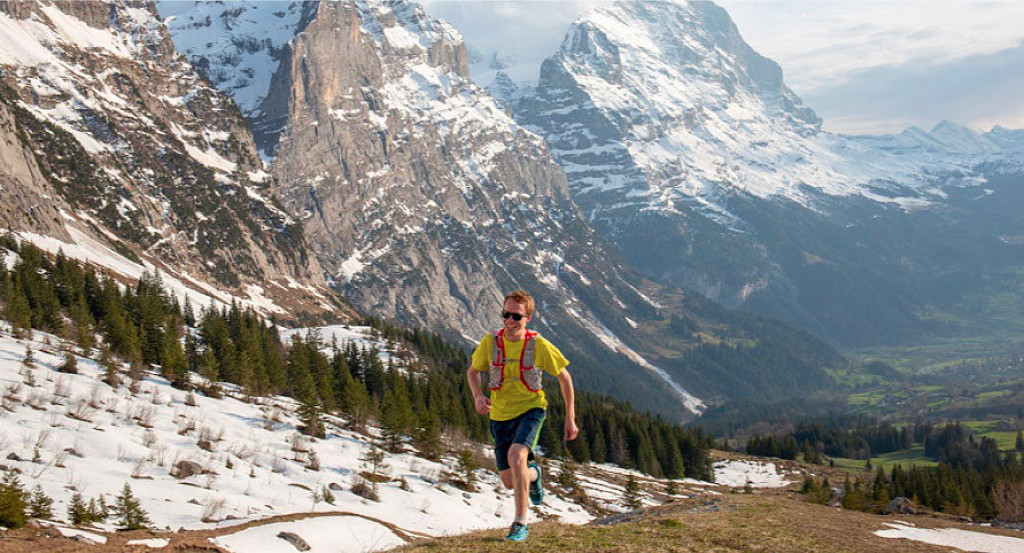Running News Daily
Running News Daily is edited by Bob Anderson in Mountain View, California USA and team in Thika Kenya, La Piedad Mexico, Bend Oregon, Chandler Arizona and Monforte da Beira Portugal. Send your news items to bob@mybestruns.com Advertising opportunities available. Over one million readers and growing. Train the Kenyan Way at KATA Running Retreat Kenya. (Kenyan Athletics Training Academy) in Thika Kenya. Opening in june 2024 KATA Running retreat Portugal. Learn more about Bob Anderson, MBR publisher and KATA director/owner, take a look at A Long Run the movie covering Bob's 50 race challenge.
Index to Daily Posts · Sign Up For Updates · Run The World Feed
How does running strengthen your bones?
When it comes to running, the benefits for your body, mind, and soul are relatively endless. In essence, that’s why it’s one of the most popular sports in the world.
People of all ages, cultures, and walks of life enjoy it. Studies have linked running to everything from boosting your mood (that good-old “runner’s high!”), treating depression, enhancing brain health, increasing memory, reducing the risk of cardiovascular disease, lowering blood pressure and much more.
Another lesser-known benefit of running is that it helps build bone strength and mass. Plus, it can help slow the aging process related to bone loss (this is great for elderly exercisers).
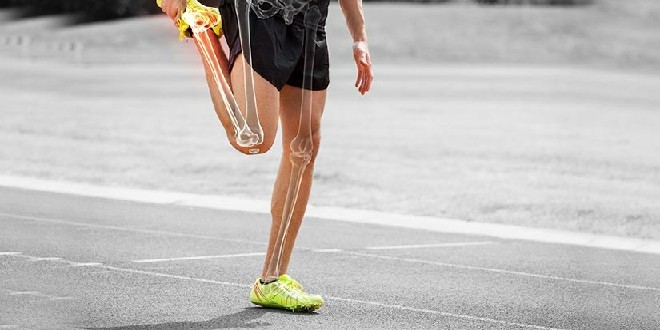
Wondering how? We’re here to explain. Aaptiv asked top running professionals to deep dive into the science of running and how it’s able to rebuild and strengthen our bones.
The Running and Bone Relationship

In its essence, running is a weight-bearing or endurance exercise. This in and of itself indicates that it has the potential to build and repair bone strength, according to Alexandria Williams, Road Runners Club of America’s certified running coach and director on the board of the National Black Marathoners Association.
“When a person runs actively, this motion causes new bone tissue to form, and thus helps bones [become] stronger,” she says. “With running, there is more impact, thus every time you run and push off your legs, the muscle contract[s] back and forth.” This motion, she explains, impacts not only the bones, but also blood flow, which all help in building healthy and strong bones.
The Role of the Foot Strike
Another reason you are able to build bone density when running is due in part to the fact that it is an open-chain exercise. This is where your foot comes off the ground and strikes it again. Closed-chain exercises, on the other hand, include cycling, swimming, and operating many exercise machines.
“The science of this is rather straightforward. When your foot strikes the pavement, your long bones in your shin and femur actually ionize. This causes your bones to pull more calcium and other essential nutrients from the blood and leads to greater bone density,” explains Roger E. Adams, Ph.D., personal trainer, doctor of nutrition, and owner of eatrightfitness. “Additionally, the force of the muscles pulling against the bones as you run stimulates some of this ionization as well.”
Any weight-bearing exercise will help, but running, with the extra stress of the foot strike, seems to have an increased ability to create the ionization in the bones, according to Dr. Adams.
However, it’s worth pointing out that the only skeletal bones that will benefit, or become stronger, from the act of running are those that experience increased stress from the weight-bearing activity. This tends to not include the upper body, as it hardly moves during a run.
The Downside
While the benefit of building bone strength from running is exciting, Dr. Adams points out that long distance runners may actually lose bone if they’re not careful. “The open-chain aspect to running does ionize and help the bones mineralize better. However, stress fractures can be a common ailment with long distance runners,” he says. “Researchers believe this is primarily due to diet restrictions or [a] too [little] caloric intake.”
Additionally, he points out that many elite or serious long distance runners carefully control their weight, which may mean that they’re not eating enough calories, especially calcium-rich dairy, to sustain healthy bones.
Besides the potentially favorable effects on bone density, running is associated with improved muscle profiles, as well. “Hamstring, quadriceps, and calf strength are beneficiaries of running workouts. However, what is unique about running, versus a less intense cardio activity such as walking, is the profound increased activity of the gluteal muscles in runners,” says Michael B. Gerhardt, M.D., sports medicine specialist and orthopedic surgeon at Cedars-Sinai Kerlan-Jobe Institute in Los Angeles, California and team physician for the U.S. Soccer Men’s National Team.
If you aim to run moderately—20 to 30 miles a week—you can expect to reap the bone-building and strengthening benefits of running.
Additionally, you can expect to strengthen the muscles attached to these bones in your lower body. “Running can make weak areas stronger. And [it] can actually increase mobility in joints, like the ankle, that tend to get stiff from not moving enough,” adds Dr. Adams.
(06/01/2021) ⚡AMPby Jenn Sinrich
After cancelling its April event due to COVID-19, the St. Jude Rock n’ Roll Marathon has been rescheduled for November 20
St. Jude Rock n’ Roll Marathon has been rescheduled for November 20, 2021.
Sharing in a release, “After assessing all event scenarios, we are pleased to share the 2021 St. Jude Rock ‘n’ Roll Nashville Marathon & ½ Marathon, has been rescheduled for November 20, 2021.”

“We thank our participants for their commitment and look forward to providing them with an exceptional event experience later this year as they continue to pursue their goals,” continued the release.
No further updates have been shared in regards to entertainment. In addition, there’s no news on if the Health Expo Center will be available at Music City Center as was previously announced.
(06/01/2021) ⚡AMPby Donna Vissman
St. Jude Rock N Roll Nashville Marathon & 1/2 Marathon
The St. Jude Rock ‘n’ Roll Nashville Marathon & 1/2 Marathon (formerly St. Jude Country Music Marathon & 1/2 Marathon) gives you the opportunity to enjoy an up close and personal tour of Music City, one of the New York Times’ top destinations in the world! Run through the Honky Tonks of Lower Broadway and take a musical tour through...
more...Japan will consider limited spectators for Tokyo Olympics
The Tokyo Organizing Committee will decide the specific number of spectators for various venues by late June. A ticket lottery is under consideration.
The Japanese government and the Tokyo Organizing Committee have begun to consider the feasibility of allowing spectators into the venues for the Tokyo Olympic and Paralympic Games, The Sankei Shimbun learned on May 28.
This shift in thinking is based on the fact that currently a maximum of 5,000 spectators are allowed at large events, even though Tokyo and some other regions are under an extended state of emergency until June 20.
The Tokyo Organizing Committee is forging ahead with the task of redesigning the system for selecting spectators by holding a drawing from among the tickets that have earlier been sold. It plans to decide the specific number of spectators for various venues by late June.

Debate Over Spectators
A decision has already been made to exclude overseas visitors from the audience for the 2020 Games. As for residents of Japan, however, a final decision will come later in June, along with the planned expiration of the current state of emergency, according to Seiko Hashimoto, president of the Tokyo Organizing Committee, who spoke at a news conference on May 28.
“We have to think about the issue in line with limits [on spectators] that the national government has come out with,” she said. “What is important is to take into account the medical and scientific basis.”
Some sectors advocate the cancelation of the Games, anxious about people from around the country traveling to Tokyo for the Olympics. Dr. Haruo Ozaki, chair of the Tokyo Medical Association, recently said, “The Games, if held, should at the very least be without spectators.”

The government relaxed restrictions on spectators at large events on May 12, when it extended to other areas some state of emergency provisions covering Tokyo. While acknowledging the need for caps on spectators, the government set the limits for large events at “less than half of capacity” up to “a maximum 5,000,” instead of the previous regulation calling for no spectators at all.
Since then, large events, such as professional baseball games, have been held with spectators in Tokyo, but there have been no clusters of COVID-19 infections.
Government officials say large events can be held safely “with scientifically valid permissible levels of the number of visitors by requiring them thoroughly to wear face masks and avoid overcrowding when entering and exiting the venues.”
In a press conference on May 28, Prime Minister Yoshihide Suga cited a number of pro baseball and J. League professional soccer matches in Japan, noting he believes the “numbers of spectators [at the Olympics] can be set in reference to these examples.”
Tokyo 2020 president Seiko Hashimoto told reporters, “There have been calls from many [Olympic] ticket holders who want to watch the Games at the venues to the extent possible.”
A Fair Ticket System — Unless COVID Surges
The number of tickets considered to be in play for the Games is estimated at approximately half the capacity of each venue, if tickets sold abroad and those canceled after the decision on last year’s delay are factored out. The organizing committee is designing a new ticketing system that keeps group ticket applications intact as they prepare for a new ticket lottery.
Nevertheless, the option remains available to hold the Games without spectators in the event of a recurrence of COVID-19 infections.
Dr. Shigeru Omi, chairman of the government advisory expert panel on the coronavirus crisis, told a session of the Health, Labor and Welfare Committee of the House of Representatives on May 28, “The COVID-19 infection risks can be controllable for athletes and the others at the stadiums [of the Tokyo Games].”
However, he warned, “There is also a risk of the infections increasing because of the number of people moving around during the Games.” His remarks suggested that the government could change its decision just before the event and hold the Games without spectators, depending on the severity of infections.
(05/31/2021) ⚡AMPby The Sankei Shimbun
Tokyo 2020 Olympic Games
Fifty-six years after having organized the Olympic Games, the Japanese capital will be hosting a Summer edition for the second time, originally scheduled from July 24 to August 9, 2020, the games were postponed due to coronavirus outbreak, the postponed Tokyo Olympics will be held from July 23 to August 8 in 2021, according to the International Olympic Committee decision. ...
more...Great Britain´s Lee Thompson continues charge towards Tokyo Olympics with back-to-back wins
The 24-year-old, who trains at City of Sheffield and Dearne Athletic Club, finished first in two individual Men’s 400 Meters races in Manchester last week with times close to his personal best, according to trainer John Henson.
He is set to compete in the first fixture of the National Athletics League Premier division season on Sunday (June 6) before the Olympic trials on June 26 and 27. Both events will be held in Manchester.
"Things are going quite well at the moment,” John said.

"We’re entering quite a heavily competitive period leading up to the trials so we are looking forward to it.”
Worksop-based Lee, who specializes in 400 M but has begun competing in 200 M events to improve his race times, was scheduled to head to Switzerland for the Geneva International athletics meeting but quarantine restrictions mean that will no longer be possible.

“It’s a pity because he could have done with a couple of good European races to finalize his preparation but it is what it is,” said John.
"He’s very confident and the last couple of races have given him that extra bit of boost.”
Lee balances a full-time career as an accountant with athletics and earlier this month helped Great Britain and Northern Ireland’s mixed 4 x 400M relay team secured a historic Olympic qualification.
This summer will be the first time a mixed relay event will be held at an Olympics.
The delayed Games are scheduled to take place between July 23 and August 8.
(05/31/2021) ⚡AMPby Steve Jones
Tokyo 2020 Olympic Games
Fifty-six years after having organized the Olympic Games, the Japanese capital will be hosting a Summer edition for the second time, originally scheduled from July 24 to August 9, 2020, the games were postponed due to coronavirus outbreak, the postponed Tokyo Olympics will be held from July 23 to August 8 in 2021, according to the International Olympic Committee decision. ...
more...Run with 4x U.S. Olympian Meb Keflezighi on Global Running Day
Imagine arriving at the starting line of your race and getting some last minute advice from running legend Meb Keflezighi before the race begins.
Better yet, imagine Meb in your ear coaching you the entire way.

UCAN and Charge Running are partnering to create a one-of-a-kind virtual experience for runners with The Global Running Day 5K, poised to be the largest virtual 5k during this year’s annual celebration of running. The live event takes place Wednesday, June 2nd from 7-8 PM ET.
Meb will be featured on the mic alongside podcaster Ali Feller to motivate and entertain runners throughout their virtual 5K route.
“Running has given me so much opportunity in my life,” says Meb, a pastwinner of the Boston and NYC Marathons. “It’s an honor to be able to inspire others to get out there and chase their personal best or just enjoy being active on Global Running Day.”
The Global Running Day 5K will be hosted on the Charge Running app, which gives runners the feeling of an in-person road race with a live leaderboard, chat rooms and a live race announcer.
The entire experience is virtual which encourages participation from people all over the word.
“Partnering with UCAN on Global Running Day is an opportunity for Charge Running to do what it does best - Bring runners together from all over the world, in an engaging way and celebrate the love of running,” Said Julie Wallock, co-founder of the Charge Running App.
As part of the experience, a number of Olympic Trials qualifiers on Team UCAN will also be running the virtual race, so participants can test themselves against some of the fastest runners in the country.
“Our passion as a company is to enhance everyone’s pursuit of fitness,” says Shoba Murali, CEO of UCAN. “Combining the engaging technology of Charge Running with the innovative nutrition offered by UCAN is a great way for runners to take control of their fitness and health.”
For more information and to register for “The Global Running Day 5K, visit ucan.co/charge
About UCAN
Based in the US, UCAN is a company obsessed with the science of health and performance. UCAN enables athletes to gain confidence in their inherent abilities to surpass their performance by unlocking their body’s full potential through smart nutrition. UCAN products utilize SuperStarch®, a patented, slow-releasing complex carbohydrate that delivers steady, long-lasting energy without triggering an insulin response. Originally created for a child with a rare metabolic disorder, UCAN Energy Pouches, Powders, Energy Mix and Energy Bars are trusted by over 80 colleges, 40 pro teams, Olympic marathoners, elite triathletes, cyclists, group fitness coaches, thought leaders in health and performance, boxers, and recreational athletes for foundational nutrition to unlock performance. Learn more at ucan.co, and get the latest news in the UCAN world by following @GenUCAN on Facebook, Instagram and Twitter.
UCAN nutrition products are currently available in powder, pre-mixed, energy mix, and bar formats, in a variety of flavors, at 350+ specialty run, bike and tri stores around the country, Lifetime gyms, and can be purchased online at ucan.co or on Amazon.
About Charge Running
Charge Running is a mobile fitness app that provides LIVE coach-guided runs and races. With real-time coaches taking you through your workout, runners get updates on their current pace, average pace, distance, and more all while being ranked on a live leaderboard with other runners from all over the world.
(05/31/2021) ⚡AMPHow to exercise safely in hot weather?
With global warming, runners are more likely to be training and competing in unusually hot weather. To effectively reduce the risk of exertional heat stroke (and death), runners should allow 10 to 14 days to acclimatize to exercising in hot weather. During acclimatization, your body adapts to dissipate more heat, thereby enabling you to run better in hot conditions. Most physiological adaptations occur between days 4 to 8 of heat exposure.
During the first week of being exposed to heat, you should have only one training session per day; no double workouts! Ideally, you will have access to cool fluids during exercise—more likely to be consumed—and you will frequently take small swigs of fluid throughout exercise, as opposed to gulping a large bolus of fluid all at once.

When exercising in the heat, you want to monitor your urine for color and quantity, and think WUT:
Weight: Is my morning weight lower than the day before?
Urine: Is my urine dark and concentrated?
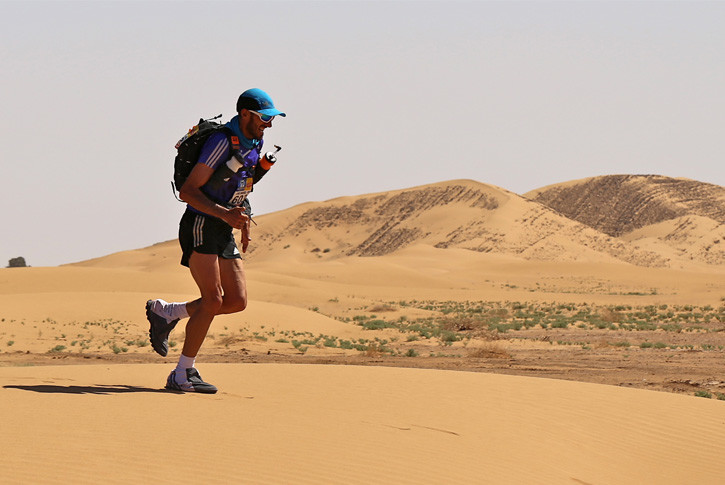
Thirst: Am I thirsty upon awakening?
Yes answers signal you are starting the day underhydrated.
In terms of health risks, being adequately hydrated is more important than being heat-acclimatized (though being well hydrated and heat-acclimatized is ideal for maximizing thermoregulation). An adaptation to heat acclimatization is reduced sodium in sweat. Despite that adaptation, endurance runners who do extended exercise in the heat often fail to replace adequate sodium. Salty sweaters (who have gritty sodium crystals on their skin) should purposefully consume sodium-rich foods and fluids.
Some runners salt-load for a day or two before an event, but researchers advise against doing that. The kidneys do a good job of excreting excess sodium via urine. The additional urine loss can be counter-productive and hurt, not enhance, performance.
Runners should try to replace 70% to 80% of sodium and fluid lost during sweaty exercise. Knowing your sweat rate (by comparing pre- and post-exercise body weight) can reduce your risk of over- or under-hydrating. Drinking too much water is dangerous, because it dilutes the body’s sodium level and can lead to life-threatening hyponatremia (low sodium).
Of all electrolytes, sodium is the biggest concern. Endurance runners need to figure out how to replace sodium losses. Through trial and error, you can learn which salty foods taste good, settle well, and “work” for you. Pickle juice, bouillon (cubes), mustard on soft pretzels, soy sauce (on rice) and beef jerky are popular options that can be consumed both right before, during, and/or after long runs.
(05/31/2021) ⚡AMPby Colorado Runner
Women’s world marathon record holder Brigid Kosgei says she is fit and healthy again as she eyes Olympics
Brigid Kosgei says she is firmly focused on adding Olympic gold to her medal collection after fully recovering from a slight leg injury.
The 26-year old tested herself at last month’s Istanbul Half Marathon where she clocked 1:16:01 to finish a disappointing fifth, in a race won by compatriot and fellow Olympics-bound, world marathon champion Ruth Chepng’etich in a world record time of 1:04:02.
"I had some minor injury when I competed in Istanbul but now I’m back fully fit and I will concentrate all my training at Kapsait until departure to Olympics,” she said.
The marathoner said an Olympic gold would be a dream-come-true for her having spent most of her childhood and teenage years wishing for an opportunity to represent Kenya at the quadrennial event.
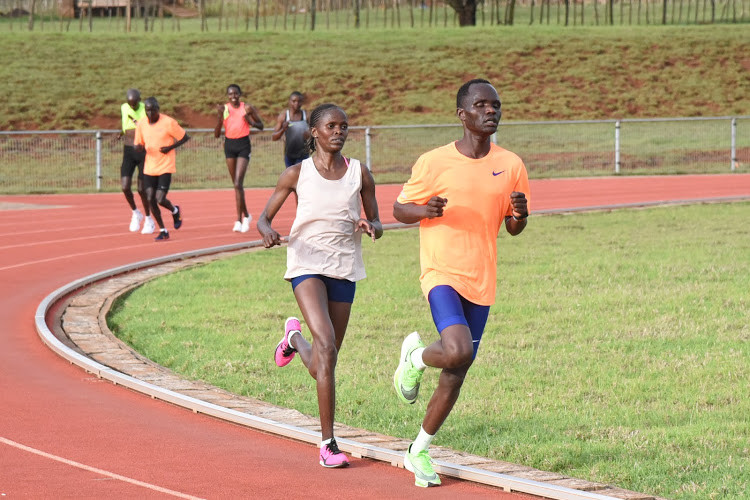
“While I was in Standard Eight, I watched the Olympic Games on television and I told myself ‘one day I’d also like to represent Kenya too. My home (Kapsowar) was quite a distance from school (10 kilometers) and I never wanted to be late that’s why I used to run quite a bit,’” she said in an earlier interview.
Kosgei has been hard at work in training, going through her paces at her Kapsait Training Camp in Elgeyo Marakwet under the watchful eye of her coach, former Honolulu Marathon champion Eric Kimaiyo.
Hers is a holistic training regime, which must take into account Kosgei's diet that hasn't changed much even in the build-up to Tokyo.
“My diet is the same and I haven’t changed anything. My body feels good and I want to push it to the limits and see how it responds on race day. We are mixing endurance and speed work with long runs," she said.

Kosgei, who is managed by the Italy-based Rosa Associati stable, has also been training in sunny conditions to ensure she acclimatises to the hot Japanese weather when she graces the Olympics.
She has responded perfectly to a recovery regimen that included sessions with Italian physiotherapist Sebastiano Erbi who spent some time monitoring her progress.
"The weather in Kapsait is good. Even when it rains, we still train, and even when it's cold, we also train; we are used to any weather condition here. We are also aware of the heat in Japan and that’s why we have some sessions at 4 pm when the sun is still out", Kosgei explains.
At times, the training group — which includes pacemakers — drive for close to two hours to Iten to access quality track sessions at the Lornah Kiplagat Academy and Stadium.
Kosgei has signed up with Stanbic Bank Kenya as ambassador in the bank’s new brand campaign dubbed "It Can Be."
The “It Can Be” campaign seeks to empower young men and women to achieve their big dreams with the world marathon record holder being used as an ambassador to motivate them.
(05/30/2021) ⚡AMPby Omondi Onyatta
Tokyo 2020 Olympic Games
Fifty-six years after having organized the Olympic Games, the Japanese capital will be hosting a Summer edition for the second time, originally scheduled from July 24 to August 9, 2020, the games were postponed due to coronavirus outbreak, the postponed Tokyo Olympics will be held from July 23 to August 8 in 2021, according to the International Olympic Committee decision. ...
more...Pro tips for hitting the trails this spring
Emma Neigel, member of Team Canada at the World Moutain Running Championships, offers her advice for transitioning from the track and roads to the trails
Canadian summer is officially on its way, and so is trail season. Now is the perfect time to swap out pavement and sidewalks for dirt paths and turn your run into an adventure. If you’re new to trail running and you’re feeling hesitant, we’ve got you covered. We spoke with Emma Neigel, a trackie-turned trail runner who was one of Canada’s top finishers at the 2019 World Mountain Running Championships for her best advice on making the transition from the roads and track to the trails.

Neigel’s advice for hitting the trails
For runners who are making the transition from the roads or track to the trails, Neigel’s first piece of advice is to invest in a good pair of trail shoes, since road running shoes lack the grip you need when navigating more difficult terrain, and provide little help when you hit a patch of mud. Her second piece of advice is to take the time to enjoy the trail. She suggests leaving the tech at home and simply taking in the sights and sounds of nature.

“Trail running is a great escape from the everyday hustle and bustle,” she adds.
Finally, she reminds runners not to forget why they enjoy the sport, and encourages them to run new routes, find running friends and to take advantage of the good weather.
“The hardest part about running is getting your foot out of the door,” she says, “so stay motivated by keeping things fun.”
(05/30/2021) ⚡AMPby Running Magazine
Runner wears Crocs in 5,000m race, flies to 14:47 finish
Who needs super spikes when Crocs are available?
Arunner named Benjamin Pachev raced a 5,000m in Portland on Saturday, running to a quick 14:47.62 finish. His time was good enough for 12th place, and although he didn’t win the race, he attracted a lot of attention during and after his run, which he completed in a pair of Crocs. That’s right, while his competitors were lacing up their spikes, Pachev tossed on his foam clogs, and he ended up beating about half of the field.
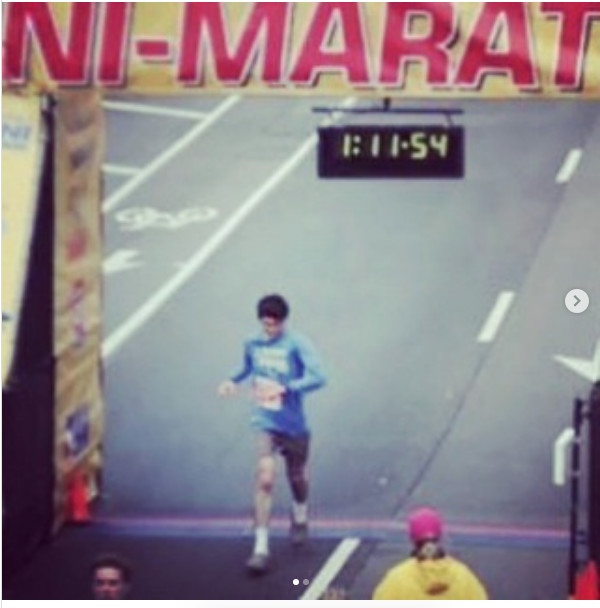
This is not the first time that Pachev has raced in Crocs. In 2017, he took his unique shoes to the Mini-Marathon in Indianapolis, where he raced a half-marathon with his father, Sasha. The younger Pachev ran to a mind-boggling time of 1:11:53, finishing in 16th place. His father, also wearing Crocs, crossed the line just a few minutes later, posting a time of 1:17:26 and finishing 44th out of more than 20,000 runners.
Pachev’s sister, Jennifer, ran the 5K at the event, and like her father and brother, she wore Crocs, the family’s apparent preferred choice of footwear. She finished in ninth overall and crossed the line as the second female runner, posting a time of 19:56.
On Saturday, Pachev recreated that Crocs magic, blazing to a sub-15-minute finish in Portland. His final time works out to 2:57 per kilometre, which is a pace most people would struggle to hit even if they were decked out in the fastest spikes on the market.
t’s clear that these shoes work for Pachev, but the question still remains: why Crocs? According to an article from the Indy Star that was published after the Pachevs’ runs at the Mini-Marathon, Sasha made the change from normal running shoes to Crocs after he saw his kids run in them.
“I was trying to figure out if there was a better way to run than in regular running shoes,” Sasha said. “I was experimenting with different things.” When his kids insisted on running in Crocs one day, he noticed that their form was better than it was in other shoes, so he tried them out for himself.
“I really liked the feeling, and I’ve run in them ever since,” he said. “They’re really not that much different, speed-wise, from racing flats.” Sasha’s kids followed his lead, and the shoes are now the go-to footwear for the family. The Pachevs certainly look peculiar walking up to the start line at races in their Crocs, but they have proven that these shoes work well for them, so it’s likely that the running world will hear more stories from the speedy Crocs-supporting family in the future.
(05/30/2021) ⚡AMPby Running Magazine
Ethiopian runner sets men’s 50K world record with 2:42:07 run in South Africa
Ketema Negasa broke the men's world record and South Africa's Irvette Van Zyl ran the second-fastest women's 50K in history
Ethiopia’s Ketema Negasa broke the men’s 50K world record on Sunday, running 2:42:07 at the Nedbank Runified race in South Africa. Negasa led the way as he and three other runners beat American CJ Albertson‘s previous record of 2:42:30. In the women’s race, Des Linden‘s recent 2:59:54 world record remained unbeaten, but South Africa’s Irvette Van Zyl ran a national record of 3:04:23, which is the second-fastest women’s result in history.

Negasa’s record
Negasa is primarily a marathoner, but he has never been able to match the necessary times to shine in Ethiopia. He owns a marathon PB of 2:11:07, a time that would rank him in the top 10 all-time among Canadian runners but isn’t even in the top 250 results in Ethiopian history. After his run on Sunday, though, it looks like ultras may be his forte.
It’s important to note that Albertson’s world record, which he set in November 2020, came on a track, while Negasa’s run on Sunday was on the road. Ultrarunning world bests are unique in this sense, because while Albertson and Negasa ran on completely different surfaces, their runs count in the same category of the 50K in general, as the International Association of Ultrarunners introduced a rule that eliminated surface-specific records in 2014. In other World Athletics-sanctioned events, the surface comes into play. For example, the 5K and 5,000m world records both belong to Uganda’s Joshua Cheptegei, but they’re two different times.
Negasa’s run worked out to an average per-kilometre pace of 3:15 for the full 50K, which helped him top Albertson’s result by 23 seconds. He crossed the line in first place, and he was followed closely by Machele Jonas, who also beat Albertson’s record with a 2:42:15 run. Third went to Mphakathi Ntsindiso in 2:42:18, and in fourth place was Kiptoo Kimaiyo Shedrack, who just beat Albertson’s record in 2:42:29.
Irvette Van Zyl run
Had the Nedbank Runified race been held a couple of months earlier, Van Zyl would have broken the women’s 50K world record. Since the race took place in late May, though, Van Zyl was late to the party, and her time is second-best to Linden’s. When she ran her race in Oregon, Linden became the first woman to break three hours over 50K, and she smashed Aly Dixon‘s previous record of 3:07:20.
While Van Zyl didn’t manage to beat Linden, she did crush Dixon’s result with her 3:04:23 finish, which is the new South African 50K record. Behind Van Zyl was Lilian Jepkorir Chemweno, who finished in second place in 3:05:00, which is now the third-fastest 50K in history.
(05/30/2021) ⚡AMPby Running Magazine
Hobbs Kessler Breaks Alan Webb’s Legendary High School 1500m Record
Runs 3:34.36 to Get Under Olympic Qualifying Standard
In one of the most incredible runs ever by an American high schooler, 18-year-old Hobbs Kessler ran a 3:34.36 1,500m at the Portland Track Festival tonight to obliterate the US high school record. The previous record, 3:38.26, was set by Alan Webb as a 1500 split en route to his legendary 3:53.43 high school mile record at the 2001 Prefontaine Classic.
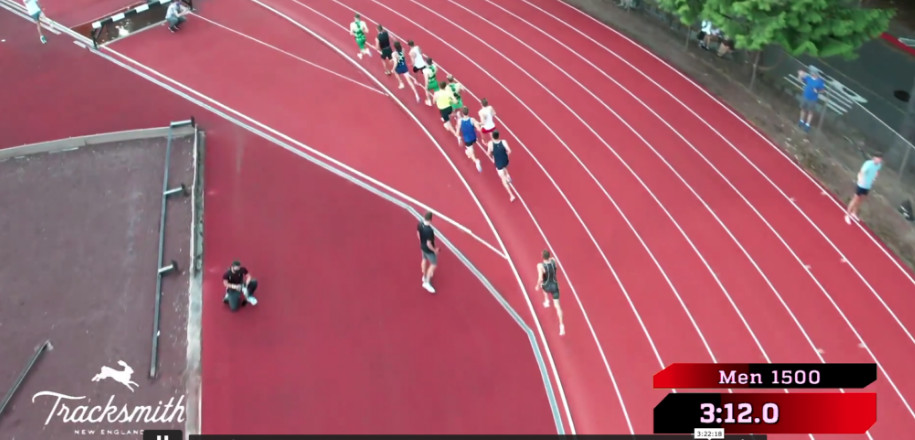

Webb’s 3:53.43 has gone unchallenged for two decades, but according to World Athletics’ scoring tables, Kessler’s 1500 tonight was the superior performance; converting to 3:51.34 for the mile (Webb’s 3:53.43 mile converts to 3:36.30 for 1500). Kessler’s time is also faster than Jim Ryun‘s US U20 1,500 record of 3:36.1 which had stood since 1966.
Kessler, who was last in the lead pack of ten with 200m to go, moved up well the final 100 meters, and threw up his hands just before the finish line as he saw the clock and finished 5th in a race won by reigning US champ Craig Engels in a personal best of 3:33.64. Engels, the 2019 US indoor/outdoor champion and a World Championship finalist, entered tonight with a pb of 3:34.04 — barely faster than what Kessler ran.
Kessler, a senior at Community High School in Ann Arbor, Mich., was already a high school record holder after running 3:57.66 in February to take down the indoor mile record. Now he is, quite simply, one of the best milers in the United States, regardless of age. His time was the third-best by an American in 2021 — only the winner Engels and fourth-placer Henry Wynne (3:34.08) have run faster this year.
How incredible was Kessler’s run? He didn’t just break the US high school record by almost four seconds; he also ran faster than the collegiate record of 3:34.68 set by Notre Dame’s Yared Nuguse two weeks ago. He also hit the Olympic standard of 3:35.00 — one of just seven Americans to have done so during the qualification period.
Kessler’s run was so much faster than any other high schooler has run for 1500 that it is hard to even make comparisons. Webb’s 3:53.43 at Prefontaine, which celebrated its 20th anniversary on Thursday, is the obvious one. Just like Webb, Kessler finished 5th in a field of pros, and just like Webb, Kessler was mowing them down over the final 100 meters.
As impressive as Kessler’s run was tonight, it was not the greatest ever performance by an American U20 athlete. That remains Jim Ryun’s 3:51.3 mile in July 1966 — a world record at the time that would stand for eight years. Ryun was just 19 years old at the time of that race, which came after his freshman year of college.
Kessler is a high school senior. His sometimes training partner, Nick Willis, an Olympic 1500m silver and bronze medallist, was in this race and tried to put it in perspective on the broadcast afterwards, “I became a spectator to the greatest performance ever by a high school miler,” said Willis, noting he himself went out at the pace prescribed for the rabbits for 800, yet was in last place. “It’s like Jim Ryun reincarnated again…He’s such a rookie in terms of running…. He’s so raw.”
(05/30/2021) ⚡AMPby Let’s Run
World 200m champion Dina Asher-Smith returns as Diamond League goes back to Gateshead
Asher-Smith will fine-tune her preparations for the Olympic Games when she races in Gateshead on 13 July, following confirmation that the Wanda Diamond League series will be returning to the North East of England for the Muller British Grand Prix.
The Diamond League season opener had been scheduled for Rabat on 23 May but moved to the Gateshead International Stadium due to ongoing coronavirus restrictions. At that meeting Asher-Smith battled the rain and wind to win the 100m and in July she will contest the 200m on that same track.

“My first 100m of 2021 last weekend was against some tough opposition and I’m expecting it to be another exciting race when I go back there in a few weeks’ time,” said Asher-Smith, who triumphed ahead of Sha’Carri Richardson, Marie-Josee Ta Lou and Shelly-Ann Fraser-Pryce.
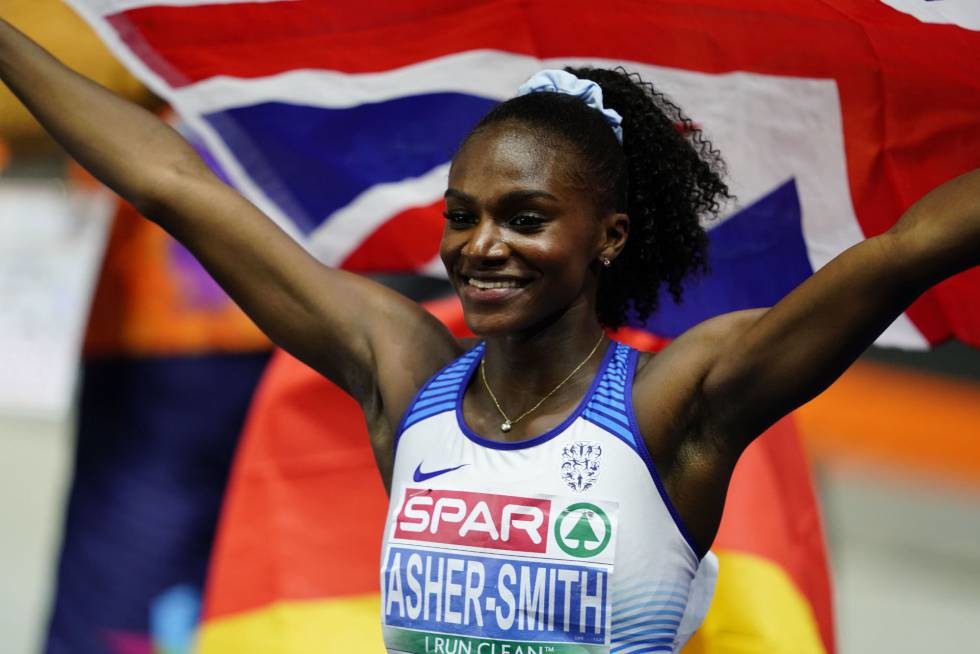
“Hopefully we will be allowed to have more fans in the stadium and the athletes will get a great send off before they go to the Olympic Games in Tokyo.”
The event on 13 July was originally due to be held at the London Stadium but has been moved to Gateshead due to the repercussions of the pandemic and after an agreement was reached between UK Athletics and the London Legacy Development Corporation.
After successfully welcoming back 2,000 spectators at the Muller Grand Prix Gateshead, British Athletics hopes that more fans will be able to safely return to the stadium for the Muller British Grand Prix.
(05/29/2021) ⚡AMPby World Athletics
South African Caster Semenya runs PB, misses 5,000m Olympic standard by 22 seconds
Olympic and world 800m champion Caster Semenya raced a 5,000m on Friday at a race in her home country of South Africa, and while her 15:32.15 run was a 20-second PB, it was still well off the Olympic standard of 15:10.00.
A 2019 World Athletics ruling bars Semenya, who is an athlete with DSD (differences of sexual development), from competing in races from the 400m up to the mile, so she has set her sights on the 5,000m for the upcoming Tokyo Games.
Since the WA ruling blocked Semenya and other DSD athletes (who have higher-than-normal levels of testosterone) from competing in anything from the 400m to the mile, it gave her a couple of options: drop down to sprint races or jump up to longer runs. A third option offered by WA was for DSD athletes to take medications to lower their testosterone, but Semenya refused to do so.
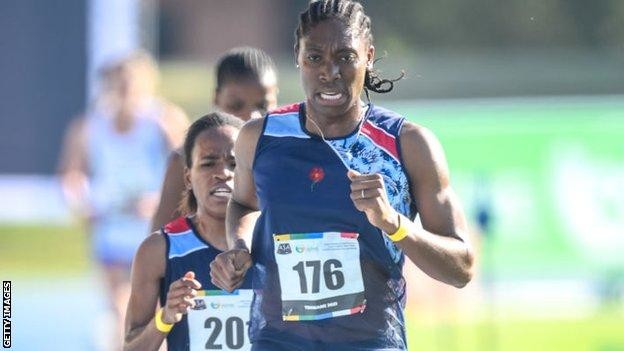
At first, Semenya dabbled in sprints, and in 2020, she got her 200m PB down to 23.49 seconds. This was still well off the Olympic 200m standard of 22.80, though, and Semenya shifted gears once more, this time jumping up to the 5,000m (which is the next-shortest race available to her and other DSD athletes in the Olympic program). She has raced the 5,000m three times in 2021, improving with each run.
First, she ran 16:14.43 in March, finishing more than a minute off Olympic standard. A few weeks later, she broke 16 minutes for the first time in her career, posting a huge PB of 15:52.28. Unfortunately for Semenya, despite the big step toward Olympic standard, this time was still 42 seconds slower than she needed to run. On Friday, she got closer to standard, but she still sits well away from 15:10.00. The Olympic qualifying window closes at the end of June.

One piece of good news for Semenya is the fact that only one South African woman has hit Olympic standard during this current qualifying period. Dominique Scott ran 14:59.08 at a race in the U.K. in July 2019, which gives her by far the best result among South African women since the qualifying window opened in May of that same year.
This is good for Semenya because it means she doesn’t have to compete with other South African Olympic hopefuls. Each country can only send three men and three women per event to the Olympics, and if three South African women had already hit standard, it would likely mean that Semenya would have to not only run under 15:10.00, but also beat the slowest of those athletes.
Semenya is not the only DSD athlete looking to make the Tokyo Games in the 5,000m — Burundi’s Francine Niyonsaba has also made the jump up in distance. Niyonsaba won silver behind Semenya in the 800m at the Rio Olympics in 2016 and the 2017 world championships. While Semenya was the stronger of the two in the 800m, it looks like Niyonsaba is better at the 5,000m, as she recently ran a Burundian national record of 15:12.08. This time won’t get her into the Olympics, but seeing as she’s just two seconds off standard, she appears to have a much better shot at making it to Tokyo than Semenya does.
(05/29/2021) ⚡AMP
by Ben Snider-McGrath
Mastering the Long Run
The long run garners more attention than any other component of marathon training. It has become a status symbol among runners in training, a measure by which one compares oneself against his or her running counterparts. It is surprising, then, to discover that much of the existing advice on running long is misguided. After relatively low-mileage weeks, some training plans suggest backbreaking long runs that are more akin to running misadventures than productive training.
A 20-mile long run at the end of a three-day-a-week running program can be both demoralizing and physically injurious. The long run has become a big question mark, something you aren't sure you'll survive, but you subject yourself to the suffering nonetheless. Despite plenty of anecdotal and academic evidence against such training tactics, advice to reach (or go beyond) the 20-mile long run has persisted. It has become the magic number for marathoners, without consideration for individual differences in abilities and goals.


While countless marathoners have made it to the finish line using these programs, I believe in a different approach. Not only will it make training more enjoyable, it will also help you cover 26.2 more efficiently.
While my long-run approach may sound radical, it is deeply rooted in results from inside the lab and outside on the roads. As I read through the exercise science literature, coached the elite squad with Kevin and Keith Hanson, and tested theories in my own training, I realized that revisions to long-held beliefs about marathon training, and in particular long runs, were necessary. As a result, a 16-mile long run is the longest training day for my standard program.
But there's a hitch: One of Kevin and Keith's favorite sayings about the long run is, "It's not like running the first 16 miles of the marathon, but the last 16 miles!"
What they mean is that a training plan should simulate the cumulative fatigue that is experienced during a marathon, without completely zapping your legs. Rather than spending the entire week recovering from the previous long run, you should be building a base for the forthcoming long effort.
For example, if you have a 16-mile Sunday long run on your schedule, leading up to it, you should do a tempo run on Thursday and easier short runs on Friday and Saturday. Don't take a day completely off before a long run because recovery occurs on the easy running days. Since no single workout has totally diminished your energy stores and left your legs feeling wrecked, you'll feel the effects of fatigue accumulating over time. This allows for partial recovery, but it is designed to keep you from feeling completely fresh going into a long run. Following the Sunday long run, try an easy day of running on Monday and a strength workout Tuesday.
This may initially appear to be too much, but if your long run's pace and mileage are tailored to your ability and experience, less recovery is necessary.
The Physiology of Long Runs
Long runs bring with them a laundry list of psychological and physiological benefits, many of which correlate with the profits of easy running. Mentally, long runs during marathon training help you gradually build confidence as you increase your mileage from one week to the next.
They help you develop the coping skills necessary to complete any endurance event. They also teach you how to persist even when you are not feeling 100 percent. Since you never know what is going to happen on marathon day, this can be a real asset. Most notable, however, are the physiological adaptations that occur as a result of long runs. Improved VO2max, increased capillary growth, and a stronger heart are among the benefits. Long runs also help to train your body to utilize fat as fuel on a cellular level. By training your body to run long, you let it adapt and learn to store more glycogen, thereby allowing it to go farther before becoming exhausted.
In addition to improving the energy stores in your muscles, long runs also increase muscle strength. Although your body first exploits the slow-twitch muscle fibers during a long run, it eventually begins to recruit the fast-twitch fibers as the slow-twitch fibers fatigue.
The only way to train those fast-twitch fibers is to run long enough to tire the slow-twitch fibers first. By strengthening all of the fibers, you'll avoid bonking on race day. By now the majority of these adaptations are probably starting to sound familiar. You can expect many of the same benefits reaped from easier work from long runs too.
Long-Run Guidelines
Advice from renowned running researcher and coach Dr. Jack Daniels provides a basis for our long-run marathon training philosophy. He instructs runners never to exceed 25-30 percent of their weekly mileage in a long run, whether they are training for a 5K or a marathon. He adds that a 2:30-3:00-hour time limit should be enforced, suggesting that exceeding those guidelines offers no physiological benefit and may lead to overtraining, injuries, and burnout.
Dr. Dave Martin, running researcher at Georgia State University and a consultant to Team USA, goes one step further, recommending that long runs be between 90 minutes and 2 hours long. While he proposes 18-25-mile long runs for high-level marathoners, one must take into consideration that a runner of this caliber can finish a 25-mile run in under 3 hours.
This highlights the importance of accounting for a runner's long-run pace. Dr. Joe Vigil, a Team USA coach and scientist, further supports this notion, advising that long runs be increased gradually until the athlete hits 2:00-3:00 hours. Certainly a 25-mile run completed in less than 3 hours by an elite runner will provide different physiological adaptations than a 25-mile run that takes a less experienced runner 3:30 hours or more.
According to legendary South African researcher and author Dr. Tim Noakes, a continual, easy-to-moderate run at 70-85 percent VO2max that is sustained for 2 hours or more will lead to the greatest glycogen depletion. Exercise physiologist Dr. David Costill has also noted that a 2-hour bout of running reduces muscle glycogen by as much as 50 percent. While this rate of glycogen depletion is acceptable on race day, it is counterproductive in the middle of a training cycle, as it takes as many as 72 hours to bounce back.
When you diminish those energy stores, you can end up benched by fatigue, missing out on important training, or training on tired legs and potentially hurting yourself. Instead of risking diminishing returns and doing an arbitrary 20-mile run, look at your percentage of mileage and total time spent running. (I often suggest a maximum of 16 miles, but we are more concerned with determining your long run based on your weekly total mileage and your pace for that long run.)
It may sound unconventional, but you'll find that it isn't random; these suggestions are all firmly based in science with proven results. As stipulated by Dr. Noakes, it is widely accepted among coaches that long runs shouldn't exceed 25-30 percent of weekly mileage. Even so, that guideline manages to get lost in many marathon-training programs in the effort to cram in mileage. For instance, a beginning program that peaks at 40-50 miles per week and recommends a 20-mile long run is violating the cardinal rule. Although the epic journey is usually sandwiched between an easy day and a rest day, there is no getting around the fact that it accounts for around 50 percent of the runner's weekly mileage. Looking at the table below, you can see how far your long run should be based on your total mileage for the week.
The numbers illustrate that marathon training is a significant undertaking and should not be approached with randomness or bravado. They also make apparent the fact that many training programs miss the mark on the long run. If you are a beginning or low-mileage runner, your long runs must be adjusted accordingly. What is right for an 80-mile-a-week runner is not right for one who puts in 40 miles a week.
In addition to running the optimal number of miles on each long run, you must also adhere to a certain pace to get the most benefit. Since we don't all cover the same distance in the same amount of time, it makes sense to adjust a long run depending on how fast you'll be traveling. The research tells us that 2:00-3:00 hours is the optimal window for development in terms of long runs. Beyond that, muscle breakdown begins to occur. Look at the table below to see how long it takes to complete the 16- and 20-mile distances based on pace. The table demonstrates that a runner covering 16 miles at a 7-minute pace will finish in just under 2 hours, while a runner traveling at an 11-minute pace will take nearly 3 hours to finish that same distance. It then becomes clear that anyone planning on running slower than a 9-minute pace should avoid the 20-mile trek.
At what pace should I do my long run?
We generally coach runners to hold an easy-to-moderate pace throughout a long run. Instead of viewing your long run as a high volume easy day, think of it as a long workout. If you are new to marathoning, err on the easy side of pacing as you become accustomed to the longer distances. More advanced runners should maintain a moderate pace as their muscles have adapted to the stress of such feats of endurance. In the long run (literally and figuratively), when you avoid overdoing these lengthy workouts, you reap more benefits and avoid the potential downfalls of overtraining.
(05/29/2021) ⚡AMPby Trail Runner Magazine
11 Snacks to Eat After a Run That’ll Help You Refuel and Recover Faster
Whether you’re short on time or your stomach can’t handle much food after your miles, these options will do the trick.
Although it’s often overlooked, the post-run recovery meal or snack is one of the most crucial elements of your fueling plan. You may think that what you eat before a run is all that matters, but good postrun recovery nutrition also plays an important role in your overall performance.


During a run, your body utilizes glycogen (your body’s source of stored carbs) for energy, and your muscles experience tiny little tears. To replace the glycogen stores and aid in muscle recovery, you want to eat foods that have a combination of carbs and protein. Ideally, a 3:1 carb-to-protein ratio has been shown to be most beneficial for post-workout recovery. In other words, a food should have 1 gram of protein for every 3 grams of carbs.
Whether you’re short on time or your stomach can’t handle much food after a run, eating a full recovery meal isn’t always doable. But there are a wide range of snacks that fit the post-run criteria. We’ve compiled a list of some of our favorite healthy packaged snacks, so you can quickly recover after logging your miles.
1 Chocolate Milk
These 8-ounce containers of chocolate milk contain the classic 3:1 carb-to-protein ratio, with 23 grams of carbs and 8 grams of protein. If you have a sensitive stomach and can’t get down food after a run, you may find it easier to drink a carton of chocolate milk. Plus, milk has nine essential vitamins and minerals, including vitamin D and calcium for bone health.
2 Maple Oats
RX is taking oatmeal up a notch with the addition of egg whites, nuts, and dates. Made with simple ingredients, RX oatmeal is ready in minutes with hot water and a microwave, and it has 35 grams of carbs and 12 grams protein. If you prefer something cold after a run, fill it with water and stick it in the fridge before you head out the door for post-run overnight oats.
3 Classic Hummus and Pretzels
If you’re craving a savory snack after a run, reach for a conveniently packaged serving of hummus and pretzels. With 10 grams of protein and 40 grams of carbs, this snack comes close to the 3:1 ratio. And it also includes sodium—an important electrolyte lost in sweat—as well as fiber, which helps keep you fuller for longer.
4 Bada Bean Bada Boom Crunchy Broad Beans
Otherwise known as fava or field beans, roasted broad beans are the newest crunchy snack to rival chips. Packed with protein and fiber, not to mention they are naturally vegan and gluten-free, roasted broad beans are a healthier option than many other crispy snacks. A 1-ounce serving has 15 grams of carbs and 7 grams of protein, so pair it with a piece of fruit for an extra carb boost.
5 Peanut Butter Chocolate Chip Organic Vegan Protein Bar
There are a ton of protein bars on the market, but only few offer a short list of recognizable ingredients with a 3:1 carb to protein ratio. GoMacro does a good job of using real ingredients—such as nuts, puffed brown rice, and pea protein—and each protein bars have 11 grams of protein with 36 grams of carbs.
6 Strawberry Chia Organic Cottage Cheese
Whether you love or hate it, cottage cheese is packed with protein and bone-building calcium. Add in fruit, and you’re on your way to a post-run recovery snack. Since a container of Good Culture’s strawberry cottage cheese has more protein than carbs (17 grams of protein and 10 grams of carbs), slather it onto a piece of whole grain bread to make sure you replace glycogen stores.
7 Organic Crunchy Chickpeas
Chickpeas are naturally rich in both protein and carbohydrates, and roasted chickpeas are a delectable and crunchy post-run snack. Whether you throw them on salad or eat them straight out of the bag, you’ll get 6 grams of protein and 18 grams of carbs for every 1/4-cup serving. Not to mention, Saffron Road has tasty flavors, such as Buffalo, Bombay Spice, Chipotle, Falafel, and Korean BBQ.
8 Sea Salt Dry Roasted Edamame
This sushi night staple is a protein powerhouse and easy to store in the freezer. But on days when you don’t feel like microwaving, Seapoint Farms makes a dry roasted edamame with just soy beans and salt. Dried edamame is higher in protein than carbs, so grab a handful with a piece of fruit, bread, or whole grain crackers.
9 SunSeed Butter Chocolate Protein Bites
If you’ve got a sweet tooth, Enjoy Life protein bites are a tasty combo of chocolate and other delicious flavors, such as mint, banana, raspberry, and sunseed butter. Three bites have 6 grams of protein and 18 grams of carbs, and they are so easy to pop into your mouth directly after a run.
10 S’Mores Flip Greek Yogurt
Greek yogurt is packed with natural protein, and Chobani has added a sprinkle of other ingredients, such as nuts, pretzels, graham crackers, and toffee to give you a hint of sweetness while also replacing glycogen stores. Each Flip has around 9 grams of protein and 25 grams of carbs. Chobani Flip’s other flavors and mix-ins include banana cream pie, cookie dough, brownie bliss, and cookies and cream.
11 White Cheddar Cheese, Sea Salted Roasted Almonds, and Dried Cranberries
Cheese, nuts, and dried fruit come together in these Sargento Balanced Breaks to offer post-run protein, healthy fats, and carbs. With different types of nuts, cheese, and dried fruit, you can choose the variety that speaks to you. The perfectly portioned snack has 7 grams of protein and 12 grams of carbs, so pair it with a handful of granola.
(05/29/2021) ⚡AMPby Runners World
Ron Hill, former British marathon runner dies at age 82
Every day between 1964 and 2017 the renowned British athlete Ron Hill ran at least a mile, setting a world record streak of 52 years and 39 days that still stands – even after snapping his sternum in a car accident in 1993.
Yet that was one of many achievements in a glorious career. For Hill, who has died at the age of 82, was also an Olympian, inventor, innovator and undoubtedly one of the country’s greatest marathon runners.
In 1970 he became the first Briton to win the Boston Marathon, breaking the course record, and won Commonwealth gold the same year in a time of 2hr 9min 28sec – becoming only the second man to ever go under 2hr 10min.
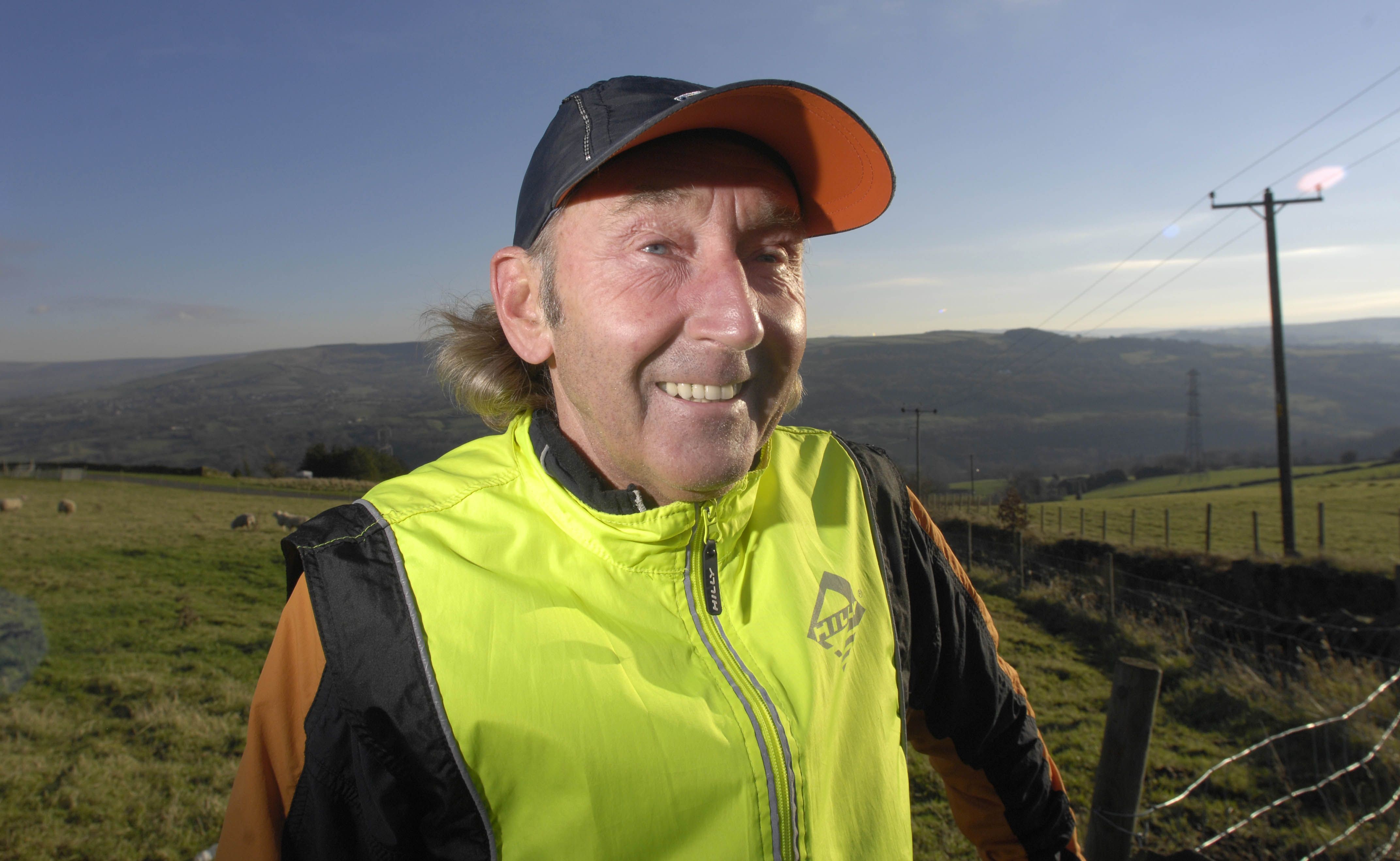
Hill also competed at the Olympics three times, finishing seventh in the Mexico 1968 Games despite running barefoot, and sixth in Munich four years later.
He was one of the pioneers of “carbo-loading” before a marathon to increase glycogen stores. And he used his PhD in textile engineering to good effect to invent and then race in breathable mesh vests to keep cool – a huge innovation at the time. His company Ron Hill Sports also led the way with their “trackster” tights before the lycra boom in the 1980s and 90s.
The tributes to Hill were led by Dave Bedford, the former 10,000m world record holder, who said Hill was “a great man, a great athlete, and a great influence to so many during the golden age of British distance running, including myself.
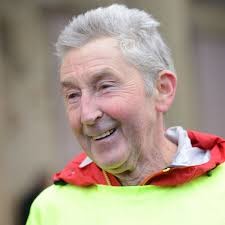
“His dedication to his sport was extraordinary, but he also stood out for being a great innovator,” he added. “He led the way with carbo-loading and with textiles. I doubt there is a British athlete in the last 30 years who hasn’t worn a pair of Ron Hill tracksters at some point. He will be deeply missed.
The 1991 world 10,000m champion Liz McColgan also paid her respects. “So sad to hear of the passing of marathon legend Ron Hill, an inspirational athletic icon over the years sincere condolences to his family. The wider running community will miss you. RIP.”
Hill’s clothing company Ronhill confirmed his death in a social media statement. “It is with immense sadness we today mourn the passing of British running legend Dr Ron Hill MBE, our founder, our inspiration, a husband, a father, a grandfather, a runner.”
(05/29/2021) ⚡AMPHow shepherd saved runners in deadly China ultra-marathon race
A shepherd has been hailed as a hero in China after it emerged that he saved six stricken runners during an ultramarathon in which 21 other competitors died.
Zhu Keming was trending on the Twitter-like Weibo on Tuesday, three days after a 100-kilometre (60-mile) cross-country mountain race in the northwestern province of Gansu turned deadly in freezing rain, high winds and hail.
The incident triggered outrage and mourning in China, as questions swirled over why organisers apparently ignored warnings about the incoming extreme weather.
Zhu was grazing his sheep on Saturday around lunchtime when the wind picked up, the rain came down and temperatures plunged, he told state media.

He sought refuge in a cave where he had stored clothes and food for emergencies but while inside spotted one of the race's 172 competitors and checked to see what was wrong because he was standing still, apparently suffering cramps.
Zhu escorted the man back to the cave, massaged his freezing hands and feet, lit a fire and dried his clothes.
Four more distressed runners made it into the cave and told the shepherd others were marooned outside, some unconscious.

Zhu headed outside once more and, braving hail and freezing temperatures, reached a runner lying on the ground. He carried him towards the shelter and wrapped him in blankets, almost certainly saving his life.
"I want to say how grateful I am to the man who saved me," the runner, Zhang Xiaotao, wrote on Weibo.
"Without him, I would have been left out there."
Zhu has been feted in China for his selfless actions, but the shepherd told state media that he is "just an ordinary person who did a very ordinary thing".
Zhu rescued three men and three women, but regrets that he was unable to do more to help others who reportedly succumbed to hypothermia.
"There were still some people that could not be saved," he said.
"There were two men who were lifeless and I couldn't do anything for them.
"I'm sorry."
The tragedy has thrown a renewed spotlight on the booming marathon and running industry in China, with authorities ordering sports competitions to improve safety.
According to The Paper in Shanghai, five cross-country, marathon or other running races have been cancelled at short notice.
(05/29/2021) ⚡AMPThe Secret Psychology of Sneaker Colors
Aqua blue, acid lime and grape purple. Electric orange interspersed with neon pink. Gray suede and cheetah print mixed with white and gold. These are not descriptions of a minimalist’s worst nightmare, but rather new color combinations from Adidas, Reebok and New Balance. And they are jarring by design.
In the age of the infinite scroll and the era of sneaker culture, where the competition to make the hottest, rarest, most wanted kick is more intense than ever, the shoe that clashes shades with the most force stops traffic — at least of the online kind. As a result, athletic shoe companies are increasingly becoming fluent aficionados of that old art: color theory.


The links between color and emotion have been studied for centuries, from Carl Jung’s color coding of personality traits to focus groups evaluating the ways in which candy colors can affect perceptions of flavor. Drug companies color their pills “cool” or “hot” according to desired effect (hypnotics are often blue or green, antidepressants yellow), and we use SAD lamps in winter to replicate the energizing qualities of a sunny day.
Little wonder that sneaker brands have departments dedicated to manipulating minuscule shifts in shades, as well as engineering the visual equivalent of a crime scene so you rubberneck online. It’s their mission to create feelings and accelerate business.
“Between 70 percent to 90 percent of subconscious judgment on a product is made in a few seconds on color alone,” said Jenny Ross, the head of concept design and strategy for lifestyle footwear at New Balance. “It can excite or calm us, it can raise our blood pressure. It’s really powerful.”
So while the bread and butter of most brands remain the basics — the Nike Air Force 1 was the best-selling sneaker of 2020, and its default is all white — the pieces that power the continued churn and buzz are the limited-edition collectibles that tap into our subconscious to create desire.
Sometimes the triggers are obvious: The use of Varsity Red, for example, summons up Ferris Bueller collegiate nostalgia; gold and purple call to mind a Lakers game; and white is associated with racket sports. But in fashion, color is also your brand. Fendi is yellow, Hermès is orange and Tiffany is blue. Thus sneaker brands toggle between their core colors and wild experimentation.
New Balance, for example, is rooted in gray, omnipresent every season, suggestive of the urban running shoe, riffing on concrete. “Doing gray right is something we take a lot of pride in,” Ms. Ross said. “Every gray on our color ring has a character and personality: Castle Rock is warm; Steel is a blue tone. With legacy models, we make sure our tanneries never stray. They replicate with precision.”
At the other end of the dial is Nike, with its neon lime Volt color, first seen at the 2012 Olympics. To some it is heinous, to others a masterstroke. “That was an intellectual and scientific choice for Nike,” said Bryan Cioffi, Reebok’s vice president for footwear design. “The first color you read in your optical receptors is that super-bright lime. It’s possibly an evolutionary take from poisonous animals and signals danger. A physical thing happens when you see it. Nike triangulated that and repeated it forever.”
Repetition is how you win the color game. You may see Volt and recoil, but you’ll always think “Nike.” As colors go, it is a paradigm for brand marketing. “We did a complete technology innovation study about how color showed up on HDTV and sports tracks,” said Martha Moore, a Nike vice president and creative director. “We were studying the idea of speed and what color complemented that in the vibration of the human eye. Volt is emotional.”
After a year of living our lives almost wholly online, pixel coloration has become even more key. “We are developing colors that appear lit from within,” Ms. Moore said. “Pixels sitting next to one another create previously unseen colors. They create new neutrals and complex combinations. We are using complex knits of yarns, with bright spots and glows that haven’t been seen before.”
Indeed. “We are seeing a particularly positive response to dialed up pastels and strong yellow,” said Heiko Desens, the global creative director of Puma. “Things that speak of energy and positivity.”
That new energy is everywhere. For example, the Yeezy Boost 700 Sun shoe, introduced in January, is a blaze of yellow and orange that is a world away from the beige associated with Yeezy of yore. Hardcore Rick Owens fans may own numerous black pairs of his Dunks, but the new season’s Geo Baskets in bubble gum pink throw a curve ball and flip the dark Owens aesthetic.
(05/29/2021) ⚡AMPTokyo Olympics CEO insists ‘things are properly being managed’ as calls for cancellation grow
Tokyo 2020 chief executive Toshiro Muto attempted to reassure those concerned about the Olympic Games going ahead this summer as he insisted “things are properly being managed”.
Japan’s capital is still under a state of emergency with rising coronavirus infection rates in the country, while there is strong opposition among the public to the Games – scheduled to start on July 23 – going ahead.

Asahi Shimbun, a major Japanese newspaper and an official partner of the Games, has called for its cancellation, but Muto insisted the issue has not been expressed directly among the Tokyo committee executive board members.
“There has been some feedback pertaining to a potential cancellation or postponement but nobody has explicitly mentioned a view that we should cancel or postpone the Games,” he said.

“Rather the board members mentioned that Tokyo 2020 has made an effort to come this far. Things are properly being managed.
“We as board members understand that we need to communicate that to Japanese people in the general public. We need to be more mindful in how we can communicate what you are doing to (those) outside Tokyo 2020.”
Muto added it was understandable for news organisations to have different views on whether the Olympics proceeds when asked about the Asahi Shimbun editorial.
“Different press organisations have different perspectives on matters and that’s very natural given their role in the society,” he added.
“In order for us to hold Olympic and Paralympic Games, we in Tokyo 2020 and the people of Japan are maximising the effort to contain the pandemic of Covid-19. If we fail to do that then people will feel anxious, be worried.
“National governments and local governments are ensuring they have all initiatives in place to contain the pandemic.
“We believe these initiatives will bear fruit and be effective, so that the situation around infection will improve towards the Olympic and Paralympic Games, that’s our thought.”
(05/29/2021) ⚡AMPThe relashionship between sugary drinks and bowel cancer
Maybe you’re not a fan of plain water—we get it!—so you’ve created a mix of beverages to drink both on runs and in everyday life. That could be soda, energy drinks, and fruit juices, in addition to sports drinks. While that might solve your taste issue, a recent study in the journal Gut suggests you may want to rethink your drink.
Researchers looked at data provided by just over 95,000 participants in the Nurses’ Health Study II, an ongoing study of women that began in 1989 and tracks daily habits and health outcomes.

They found that over a 24-year period, those with a higher intake of sugar-sweetened drinks were at higher risk of developing bowel cancer before age 50. Women who drank two or more per day were about twice as likely to be diagnosed with this type of cancer, and each daily serving was associated with a 16 per cent higher risk.
The reason for this is likely due to the way sugar-sweetened drinks can cause a rapid rise in blood glucose and insulin secretion, causing inflammation and obesity, which are both associated with a higher risk of bowel cancer development.
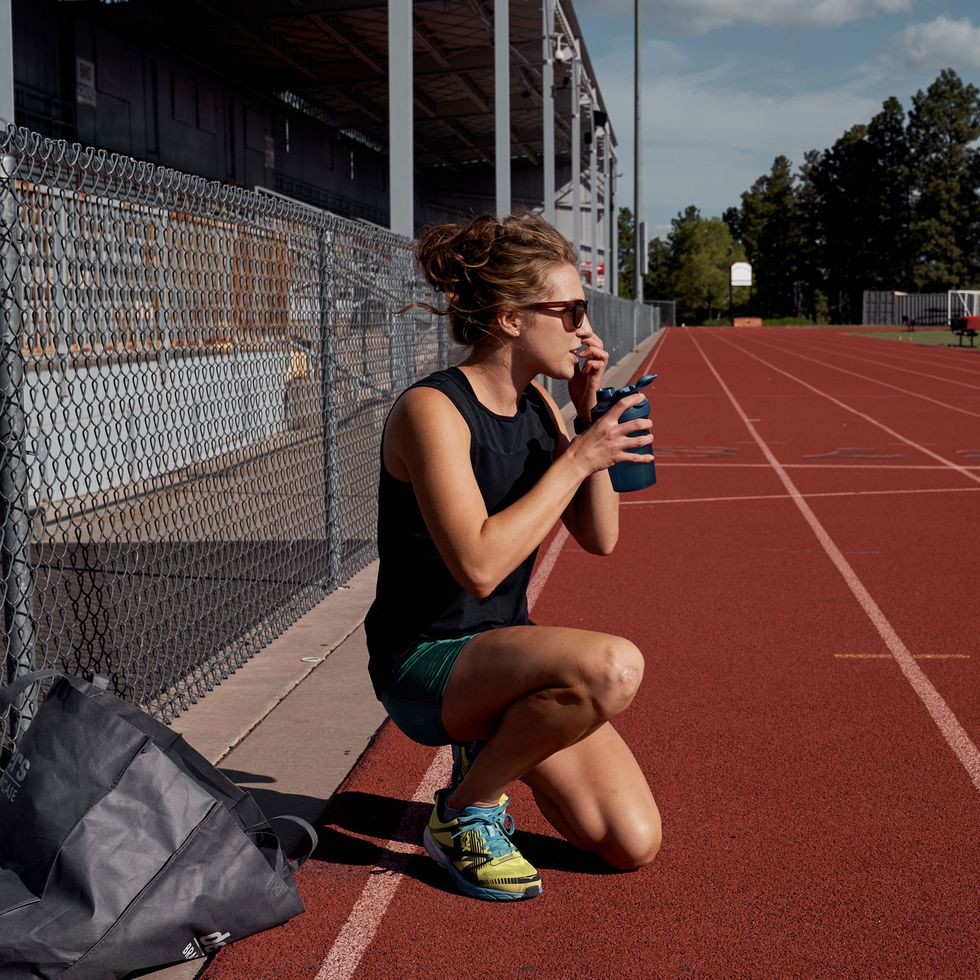
Although artificial sweeteners have their downsides in other research—like this review, which found negative side effects in some animal and human studies—the researchers in the current study discovered that substituting sugar-sweetened drinks with artificially sweetened ones were beneficial. In those cases, there was a 17 to 36 per cent lower risk of a bowel cancer diagnosis before age 50.
What does this mean in terms of daily consumption? First, that when you aren’t exercising, water tends to be a better option, according to dietitian Kelsey Pezzuti, R.D., who specialises in sports nutrition. She told Bicycling that laying off the sports drinks as a regular beverage can help you control the amount of sugar you’re consuming overall.
When you are on a run or doing other exercise, a sports drink can be beneficial if your activity is at moderate-to-high intensity and lasts for more than an hour. That’s because their combination of fluid, electrolytes, and carbs has been shown to help many people power through intense workouts with sustained energy compared to plain water.
If that run is just an easy 30 minutes, though? Not so much.
'These drinks are ideal for athletes training several hours per day, such as marathon runners or triathletes,' said Pezzuti. 'If your workout lasts less than an hour, chances are slim that you actually need a sports drink.'
(05/28/2021) ⚡AMPby Elizabeth Millard
Ethiopia’s Gudaf Tsegay has had an amazing 2021 season so far
2021 is the year of Gudaf Tsegay. The world championship 1,500m bronze medalist has raced six times this year, competing in a different event on each occasion. She ran the world-leading time in all six of those races, and she still holds the world lead in four of them. Tsegay has won every race she has entered this year, and on top of her world leads, she has run four PBs, a national record and a world record.
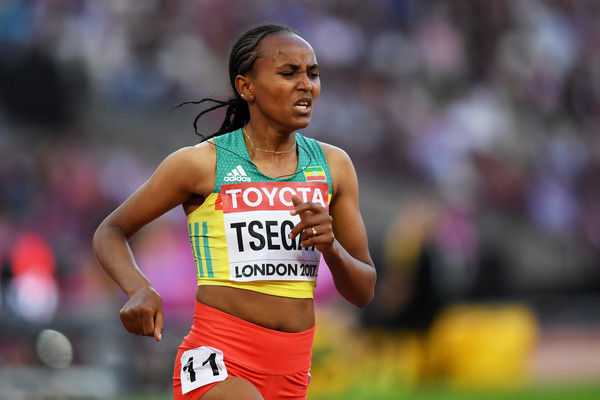
Tsegay opened her season with a 1,500m race in Addis Ababa, Ethiopia, where she ran 4:02.4. She won the race handily, beating the second-place finisher by nine seconds. At the time, this was the world lead in the outdoor 1,500m, but it came in January, early on in the season when most of the world was still competing indoors. Even so, since then, Tsegay’s time has only been beaten by five women, and she currently sits in sixth in the 2021 rankings.
Next, Tsegay travelled to France, where she raced an indoor 1,500m. She ran an incredible time of 3:53.09, crushing the rest of the field (Great Britain’s Laura Muir finished in second in 3:59.58) and beating the world record by two seconds. That gave Tsegay her second world-leading result in a row, but she wasn’t finished yet. Less than a week later at another French meet, she ran her third world lead of the year and a national record in the indoor 800m, which she won in 1:57.52.
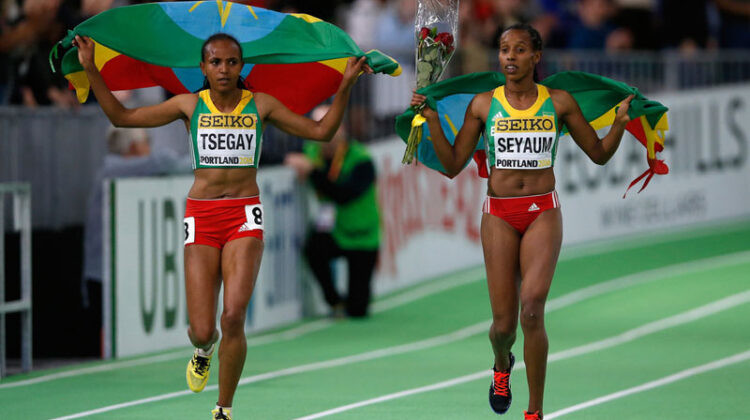
Closing out her indoor season 10 days later in Spain, Tsegay ran another world lead and PB, this time in the 3,000m. Yet again, she not only ran the fastest time of the year, but she destroyed the field, beating second-place finisher and fellow Ethiopian Lemlem Hailu by a whopping seven seconds. All three of these results that Tsegay ran indoors remain the world-leading times on the year.
Moving back outdoors, Tsegay jumped up in distance to the 5,000m, which she raced at the Ethiopian Championships in Addis Ababa in April. She won the race in 14:49.7, beating 5,000m world record holder Letesenbet Gidey by seven seconds. Tsegay’s time was the world lead for a month before Sifan Hassan of the Netherlands ran 14:35.34 in May.
Finally, Tsegay’s most recent run came in the 10,000m at a race in Portugal. Despite the fact that the race was her debut in the 10,000m, Tsegay cruised to the win and the world lead, stopping the clock in 29:39.42 (the fastest 10,000m debut in history). Second place went to Bahrain‘s Kalkidan Gezahegne in 29:50.77, which is the second-fastest result in 2021 so far.
That’s six races, six wins and six world leads across a wide variety of distances. Tsegay has proven that she is as capable of winning an 800m race as she is at winning a 10,000m, and she is only 24 years old. This has certainly been the year of Gudaf Tsegay so far, but with such clear talent and years of racing ahead of her, she could be the woman to beat for the better part of the next decade, so running fans better get used to hearing her name.
(05/28/2021) ⚡AMPby Ben Snider-McGrath
Predicting running injuries
A recent journal article on running injuries starts with this gem as its first sentence: “Runners are subject to a high incidence of lower extremity injury of between approximately 20% to 80%.” This pseudo-stat, which originated in a 2007 systematic review by Dutch researchers, is a kind of running joke among researchers in the field—an opening line that admits that we basically don’t know anything about who gets injured and why.
It’s particularly appropriate in this case, because the new study ends up highlighting the depths of our ignorance. Researchers at Dublin City University, led by physiotherapist Sarah Dillon, explored whether it’s possible to predict which runners are most likely to get injured based on tests of simple characteristics like strength, flexibility, foot position, and asymmetry. The results, which appear in Medicine and Science in Sports and Exercise, don’t say much for our ability to predict the future, but have some important implications for how we think about injury risk.
The study involved 223 recreational runners, divided into three groups. One group consisted of 116 people who had suffered a running-related lower-body injury between three and 12 months prior. The second group was 61 people who had been injured more than two years prior but were subsequently healthy. And the third was 46 unicorns who had never suffered a running injury, defined as pain that caused them to restrict or stop training for at least seven days or three consecutive sessions, or consult a physician or other health care professional.

Runners who had been injured less than three months ago were excluded, to ensure that everyone was healthy. So were those injured between one and two years ago, to ensure a clear distinction between recently injured runners and those who seemed to have reacquired injury resistance. That’s important, because numerous studies (including the 2007 review) have concluded that one of the best predictors of future injury is previous injury. If you’ve been hurt and then stayed healthy for two or more years, you’re beating the odds.
All these runners came into the lab for a series of tests. Strength was assessed for various hip, knee, and ankle movements. Hip and ankle flexibility was measured, as were foot posture index and navicular drop, which both assess how much your foot pronates (rolls inward) or supinates (rolls outward). For each of these measures, an asymmetry index was calculated based on the differences between right and left side.
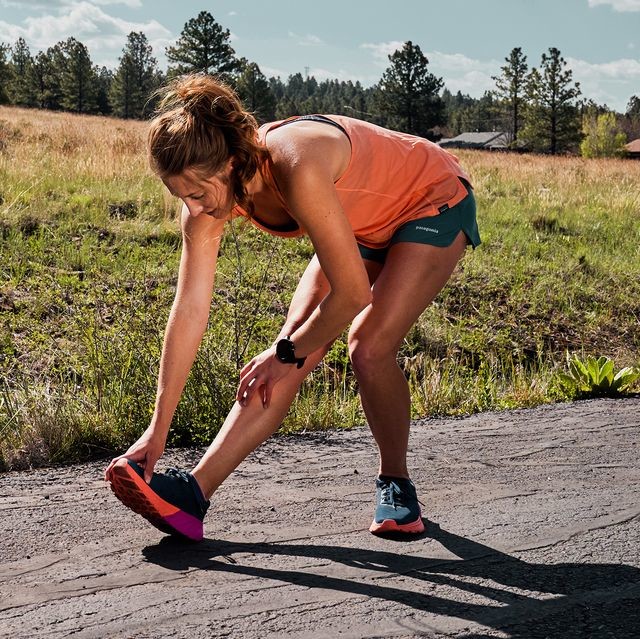
The results are pretty easy to sum up. The recently injured, injury-free for two years, and never-injured runners had, on average, essentially the same characteristics. In fact, the minor differences that did emerge were the opposite of what you’d expect: the never-injured runners had weaker calves than both injured groups, and weaker hip abductors than the recently injured runners. That’s bad news for the hope of injury-proofing yourself by doing a few simple tests, identifying key weaknesses, and fixing them with targeted exercises.
The two possible explanations floated by the researchers is that recently injured runners had equal or greater strength because they’d been diligently doing rehab exercises. Indeed, 87 percent of the recently injured runners reported doing a rehab protocol—though in my anecdotal experience that generally involves being given a sheet of paper with some exercises on it, half-assing them for a few weeks, and then getting bored and forgetting about it. Another possibility is that injured runners developed compensatory movement patterns that strengthened uninjured muscles while covering for the injured ones.
More likely, in my view, is that a broad approach that lumps all running injuries together is doomed to failure. Maybe people who develop runner’s knee have, say, slightly weaker hips, and people who develop shin splints have slightly weaker ankle dorsiflexors, and people who develop plantar fasciitis have slightly tighter calves, and so on. Throw them all together in one group, and none of those warning signs will be statistically significant overall.
If you’re searching for root causes and pondering the eternal philosophical question of why bad injuries happen to good people, then these caveats matter. Despite the new study’s non-result, it’s still possible that there is an anatomical reason for your injury, rather than just a bad roll of the dice. The current tests just aren’t sensitive enough to pick it up. But in practice, if you’re actually trying to predict and prevent injuries, that’s a problem.
If all this seems a bit depressing, it’s worth remembering that running injuries, unlike hamstrings strains, don’t generally happen instantly. They build up slowly, a consequence of too much, too soon, for too long. Transient aches and pains are probably a much better indicator than any screening test of what weaknesses and imbalances you need to address. And if you do get injured, don’t be too hard on yourself: despite what your therapist may tell you with the benefit of hindsight, nobody really saw it coming.
(05/28/2021) ⚡AMPby Alex Hutchinson
Raiya Matonovich is the fastest 13-year-old in North America at the 800m
Two weeks ago, 13-year-old Raiya Matonovich of Kamloops, B.C. ran 2:10.78 in the 800m, a mere 0.8 seconds off the U16 record that has stood for 26 years. That record was set in 1995 by none other than the current Canadian record-holder in the marathon, Malindi Elmore, which bodes well for the future success of this young track star.
According to Kamloops news outlet, CFJC Today, Matonovich has been running since she was five years old, when her mom would take her to Kenna Cartwright Park for runs. Ever since then, the young athlete says she’s been really enjoying it. Now a grade eight student at SaHali Secondary School, her coach, Sean Lehmann, believes Matonovich’s success is only beginning.
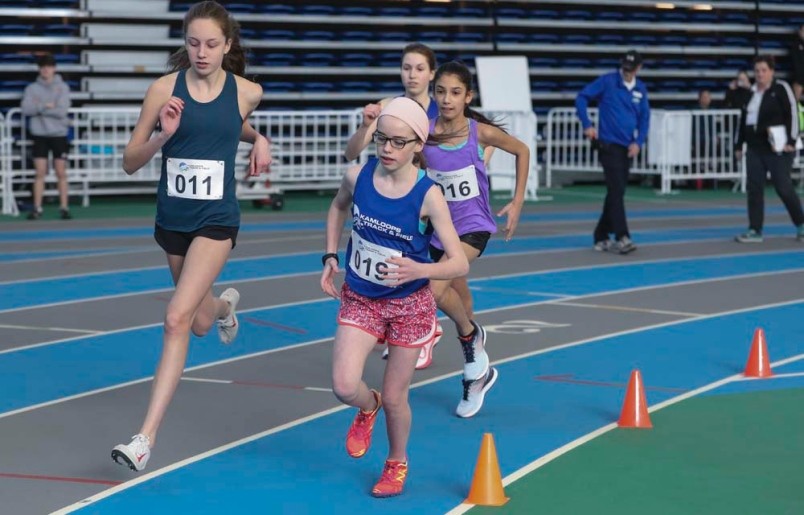
“Raiya’s just started running as a U16, so she’s still 13 years old, and she’s got plenty of time to break these records,” he said. Matonovich is also excited about her success, and she’s anxious to keep going to see what she can achieve.
“For sure, next time I’m aiming to get under 2:10 for 800,” she adds.

Lehmann says Matonovich’s time makes her the current fastest 13-year-old 800m runner in North America and the second-fastest in the world (the fastest time of 2:08.45 belongs to Ivy Boothroyd of Sydney, Australia). She is also the third-fastest in the world at the 1,500m.
The young runner looks up to Elmore, whose time she nearly beat, and hopes to one day run at Stanford, where Elmore set the school’s record in the 800m and the 1,500m and was a five-time All-American.
“For quite a few years now, I know this is something that I want to do when I grow older, just to run professionally,” she said. “So I feel like it’s really exciting for me. I want to see how far I go.”
Lehmann believes she’s got the chops to accomplish this, considering she’s running University-level times already. If Matonovich continues with this trajectory, in a few year’s time we may be seeing her not only competing at Stanford, but accomplishing her other dream — to compete at the Olympics, and, as she says, “hopefully to break some world records, for sure.”
(05/28/2021) ⚡AMPby Brittany Hambleton
2021 Richard S. Caliguiri City of Pittsburgh Great Race Returns to a Live Start Line and Opens Registration
The 44th annual Richard S. Caliguiri City of Pittsburgh Great Race presented by Highmark Blue Cross Blue Shield and 26th annual Dollar Bank Junior Great Race open registration inviting participants to the live event. The One Great Weekend is scheduled for Sept. 25-26, 2021.
“Last year's virtual event participation showed us just how much people love this event,” said Brian Katze, Race Director. “We can't wait to welcome everyone back to the start line for this year’s One GREAT Weekend.”
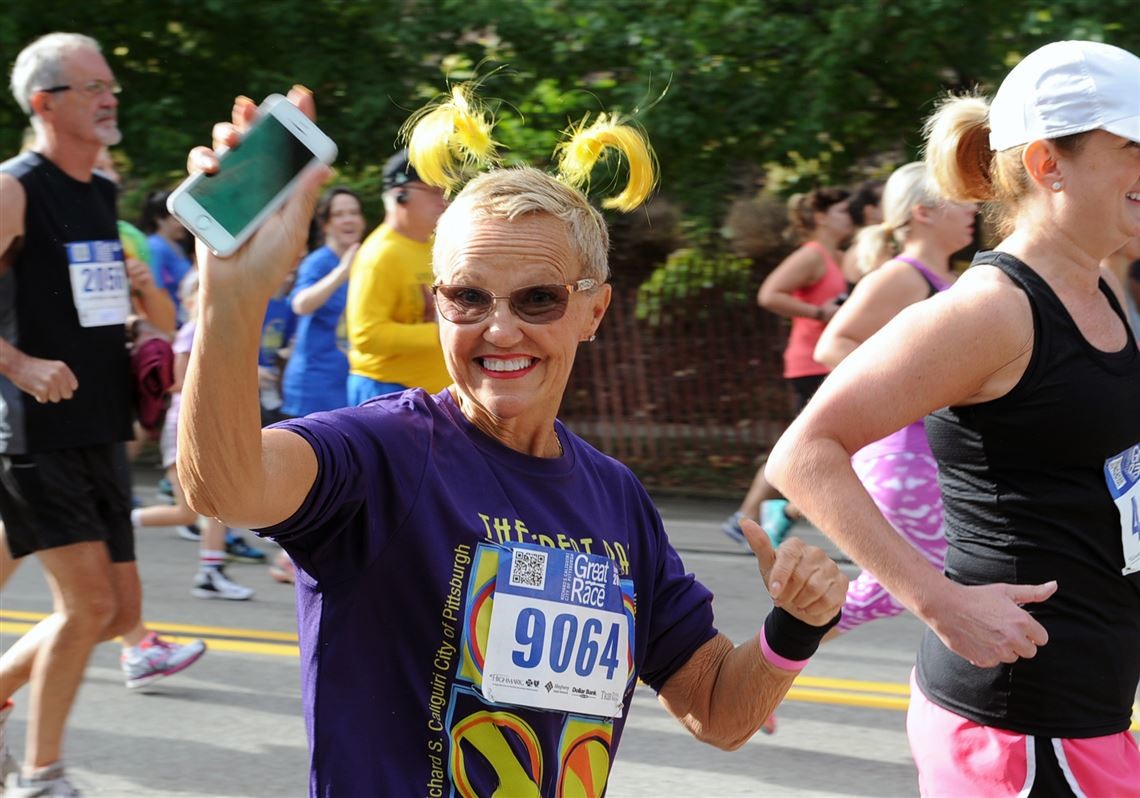
With a 10K, 5K, One Mile Family Fun Run, Tot Trot and Diaper Dash race options, there is an event for everyone in the whole family. Registration for the 5K and 10K opens at $30 while the Junior Great Race events are $10. All participants will receive a race shirt and medal for their accomplishments.
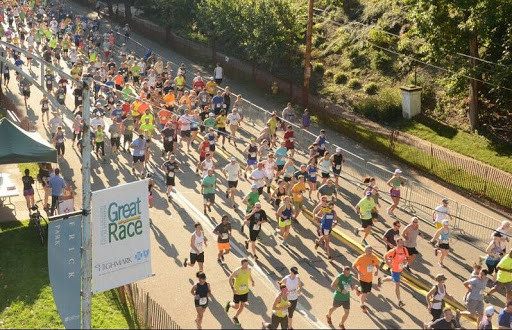
Each year, the Great Race donates $1 from every Great Race and Junior Great Race registration to the Richard S. Caliguiri Amyloidosis Fund, a fund held by the Pittsburgh Foundation that is dedicated to supporting medical research.
For the fifth year in a row, the City of Pittsburgh will partner with P3R, the engine behind Pittsburgh’s greatest races including the DICK’S Sporting Goods Pittsburgh Marathon, to produce the 2021 weekend of events. The Richard S. Caliguiri City of Pittsburgh Great Race is the largest 10K in Pennsylvania and continues to grow.
About the Richard S. Caliguiri City of Pittsburgh Great Race
Each year on the last Sunday of September, the starting gun sounds for a world-class road race that has become a true Pittsburgh tradition for the past 40 years. The Great Race – established as a 10K race by the late Mayor Richard S. Caliguiri – has attracted nearly a half million participants since 1977. Over the years, this popular fall fitness classic has grown to include a 5K run/walk, running clinic, two-day expo and children’s race. For more information about the Richard S. Caliguiri City of Pittsburgh Great Race, visit www.RunGreatRace.com
(05/27/2021) ⚡AMPCity of Pittsburgh Great Race
In 1977 Mayor Richard S. Caliguiri established The Great Race as a community “fun run.” Eleven years later, Mayor Caliguiri died of amyloidosis, a rare protein disorder in which one or more organ systems in the body accumulate deposits of abnormal proteins known as amyloid. Each year The Great Race donates $1 from every Great Race and Junior Great Race...
more...Japanese Men Break M90 4x400 m World Record by Almost Four Minutes
At Sunday's Aomori Masters Time Trials meet a Japanese men's team set a 4x400 m relay world record of 8:49.01 in the men's 90+ age category, taking nearly four minutes off the previous world record of 12:41.69 set in the United States in 2014.
Starting from a crouching start, leading runner Matashiro Suruga, 91, split roughly 2:07.5 before handing off to second runner Yuzo Kudo, 92. Kudo split 2:34.5, with third runner Kozo Mitsuya, 90, splitting 2:27.0 But anchor Hiro Tanaka, 90, delivered the biggest run of the day.
Out smooth and readily steadily, the stadium announcer predicted on the first curve that Tanaka would bring the team home under ten minutes. Hie was fast enough that less than 200 m later she revised that prediction to under nine minutes. Kicking in the last 100 m, Tanaka split an impressive 1:40 to bring the team home to the record. Without a doubt, it was the performance of the weekend worldwide.
(05/27/2021) ⚡AMP
by Bret Larner
BOLDER ON THE RUN in a Safe Return to In-Person Racing
One of the largest road races in the nation, and America’s All-time Best 10K is back. With guidance from governmental entities and health officials, the BOLDERBoulder team is set to create a unique experience in 2021 to deliver the fun that the annual race is known for, in a new event concept which has been specifically designed to re-acclimate race participants from virtual running back to in-person running races, Stack Sports announced today.
The BOLDERBoulder this year has created a unique variation for Memorial Day Weekend in this “walk before you run” run, called BOLDER on the RUN, and will stage in-person 10K races, on marked, measured and timed courses, at six different locations along the front-range.

The event will span 14 hours each day, beginning Saturday May 29 at 6:30 a.m., through 8:30 p.m. Monday May 31, 2021.
In support of BOLDER ON THE RUN, the BB10K team is partnering with its longstanding timing, scoring and results partner, the End Result Company powered by Stack Sports, for the official timing, including the daily event execution to provide accurate timing and official results and scoring for each participant.“This is an incredible event and we are so excited to be a part of its return in 2021,” said John Adams, GM – Endurance at Stack Sports. “We are always looking for opportunities to innovate, and working with Cliff and his team on this idea was a real look at how technology can partner with event staff to deliver a great experience. BB10K is back, and an example for other races and the broader community of road running events that it’s safe.”The BOLDERBoulder mantra, “Oh Yes You Can!” since 1979, is the battle cry which has encouraged participants of all ages and abilities to participate, stay active, get healthy, get outside, celebrate Boulder, Colorado, and honor Memorial Day and those who have given their life in service to this country.
This year the event will take its Can Do Attitude on the road and to the next level with a one-of-a-kind experience at the six unique courses, in Broomfield, Erie, Firestone, at the Greenland Trail in Larkspur, Littleton, and Loveland.Each venue features a different course and each provides a unique experience and adventure, allowing every participant to take on the challenge of finishing a 10K by selecting their venue, their day and their preferred race time. Famous for its BOLDER attitude at its BOULDER altitude (5,391’) each course offered is situated above 5,000’ and provides for smaller race groups to run unimpeded during their specific time block over the weekend.“Because we are able to time each participant, similar to the big race, we will be able to recognize the top 15 fastest times for boys and girls and men and women every age,” said race director, Cliff Bosley.

“Creating something new and different in a year where there is still an abundance of caution about CV-19, also puts us in a great spot where we can help participants to be comfortable as they assimilate back to in-person running as we begin preparations for the traditional race in 2022.”In its 42nd year with BB10K End Result has worked closely with the event anticipating its return. “End Result Company is excited to see this great event return in such a unique way and to provide the premier event with best-in-class technology,” said Kevin Jandt, VP, Endurance at Stack Sports. “Providing our timing services just provides additional data points to BB10K to ensure the event is both competitive and safe.”“We can’t wait to see you out there,” Cliff Bosley, Race Director.About BOLDERBoulderThe BolderBOULDER, named America’s All-Time Best 10K by Runner’s World, is the 4th largest running race in the United States and the 7th largest in the world. The race attracts over 50,000 runners, joggers, walkers and wheelchair racers, and draws professional athletes from around the world to compete for one of the largest non-marathon prize purses in road racing.
The annual in-person race starts at 30th and Walnut and winds through Boulder neighborhoods with live music and entertainment at every corner. The race finishes at the University of Colorado’s Folsom Field and attracts over 100,000 spectators throughout the course.
(05/27/2021) ⚡AMPBOLDER BOULDER
In 1979 we dreamt of attracting a few hundred of our friends to race though the streets of Boulder, Colorado to celebrate Memorial Day with our families. Fast forward almost 40 years and the Bolder BOULDER has grown to become one of the largest and most highly acclaimed 10K’s in the world. Almost 1.2 million runners, joggers, walkers and spectators...
more...Francine Niyonsaba runs 5,000m debut, finishes just off Olympic standard in 15:12.08
World and Olympic 800m silver medallist Francine Niyonsaba of Burundi raced a 5,000m in Spain on May 22, and she finished with a national record of 15:12.08.
Niyonsaba’s result was just off the Olympic standard of 15:10.00, and it was her first official race over 5,000m. Like South Africa’s Caster Semenya, Niyonsaba is an athlete with DSD (differences of sexual development), and a 2019 World Athletics ruling prevents her from competing in any events from 400m up to the mile.

Niyonsaba, Semenya and other DSD athletes (who have higher-than-usual rates of testosterone) had to make a tough decision when WA barred them from competing in certain events. They could take hormone-suppressing drugs to lower their testosterone levels, drop down in distance to compete in sprinting events like the 100m and 200m or jump up to races longer than a mile. Refusing to take any hormone suppressants, Semenya has spent the past couple of seasons testing out both ends of the racing spectrum, running races as short as 200m and as long as 5,000m.
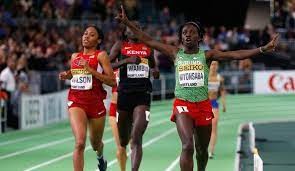
Semenya has made progress in both arenas, but her PBs of 23.49 seconds in the 200m and 15:52.28 in the 5,000m are well off the Olympic standards of 22.80 and 15:10.00. Niyonsaba, however, has set her sights solely on the 5,000m, and her undivided focus on the longer race seems to have paid off, as she is now just a couple of seconds away from qualifying for the Tokyo Games.
Niyonsaba announced her plans to compete in the 5,000m in February, and she now has a little over a month to lower her PB by a couple of seconds in order to qualify for the Summer Games. (The Olympic qualifying window closes on June 29.) After the race, Niyonsaba took to social media to express her excitement in the run, writing, “So happy to be back in international competition with a great debut of 15:12 in the 5K..it was a big challenge but I faced it with great determination and perseverance.”
(05/27/2021) ⚡AMPby Ben Snider-McGrath
Registration for 2021 Honolulu Marathon opens in June
The Honolulu Marathon will be held in 2021 after being canceled in 2020 due to the COVID-19 pandemic.
Early registration for Hawaii residents will be open from Tuesday, June 1, through Monday, June 14.
Get Hawaii’s latest news sent to your inbox, click here to subscribe to News 2 You, a daily newsletter.
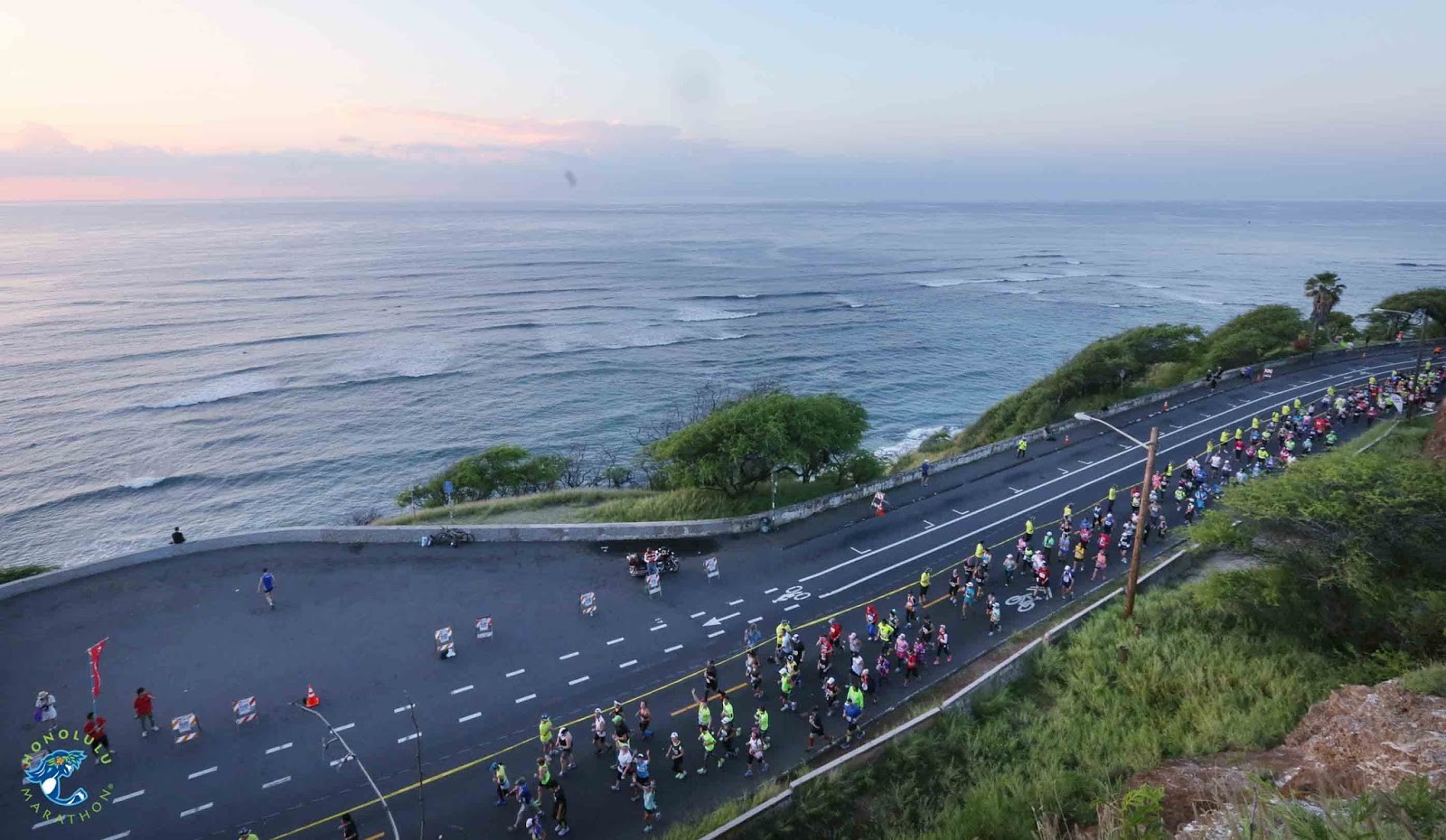
Mainland resident registration will be open Tuesday, June 15, through Wednesday, June 30, and general registration for everywhere else — excluding Japan — will open on Thursday, July 1.
The event draws tens of thousands of people from all over the world and the Department of Health believes it can be held safely.
Those who were registered for 2020s Honolulu Marathon will be allowed to register for 2021s Honolulu Marathon for free and should receive an email with a unique transfer code.
The 2021 Honolulu Marathon will be held on Sunday, Dec. 12.
(05/26/2021) ⚡AMPHonolulu Marathon
The Honolulu Marathon’s scenic course includes spectacular ocean views alongside world-famous Waikiki Beach, and Diamond Head and Koko Head volcanic craters.The terrain is level except for short uphill grades around Diamond Head. ...
more...Report says that Japan's heat will impair Olympic athletes' performance
The impact of climate change will likely lead to "impaired" performances at the Tokyo Olympics, according to a report backed by leading athletes.
In the report, titled Rings of Fire, it is argued that summer heatwaves in Tokyo during the past three years indicate that conditions will be tough.

Concerns over heat have caused the marathon to be moved from Tokyo.

Professor Mike Tipton said he expects Tokyo to be the most "thermally stressful Olympics" of recent times.
The University of Portsmouth professor helped to produce the report, which was backed by athletes, the British Association for Sustainability in Sport (Basis) and scientists from the Priestley International Centre for Climate at Leeds University.
He told BBC Sport: "The take-home message is you've probably got to move the Olympics to a different time of the year rather than a different geographical location or time of the day and I think that's something, going forward, the International Olympic Committee will have to start considering.
"I would be fairly confident to say that performances will be impaired across a lot of sports. The sport as a spectacle will be impaired in terms of the performance level of the people who are doing it."
Mara Yamauchi, who competed in the marathon for Britain at the 2008 and 2012 Olympics, backed the report.
(05/26/2021) ⚡AMPTokyo 2020 Olympic Games
Fifty-six years after having organized the Olympic Games, the Japanese capital will be hosting a Summer edition for the second time, originally scheduled from July 24 to August 9, 2020, the games were postponed due to coronavirus outbreak, the postponed Tokyo Olympics will be held from July 23 to August 8 in 2021, according to the International Olympic Committee decision. ...
more...Reasons why training with a coach is better than training on your own
Most people who start training decide to start on their own with a random program they have found from who knows where. The problem with this approach is that the program probably wasn’t designed for them. As a result, many end up failing because they either lost interest or became discouraged. This is one of the reasons why working with a professional trainer or coach is a better option, but there are many others. Let’s take a look at why you should consider hiring a coach instead of training on your own.
You Know Nothing About Fitness
If you’re like most people, your knowledge of fitness probably comes from a mix of things you have heard from friends or online. There’s probably a lot of misinformation in there too. Personal trainers and coaches have learned all about fitness and use scientifically proven methods and principles. They will not only be able to help you with things like how often you should train to reach your desired goals and at what intensity, but they can give you nutrition and lifestyle tips as well.

They Can Create a Plan Tailor-Made for You

People go to the gym for all sorts of reasons: some are trying to lose weight, some want to build muscle, others may want to improve their endurance, and some may want to get pure strength. All of these people will need to use different approaches if they want to reach their objectives. This is something a personal trainer will be able to help you with. The personal trainers at CLUB4Fitness, for example, will sit down with you and create 30 to 60-minute training sessions tailor-made for you. They will be able to help you whether you want to lose weight and keep it off or improve your strength and cardiovascular performance.
More Accountability
Another major benefit of working with a personal trainer or coach is accountability. You’re not obligated to work out on days you don’t want to, but you are less likely to miss sessions if you know you’ll have someone to answer to. A personal trainer will also help you keep your eyes on the prize and remind you of why you’re training in the first place.
Better Results
At the end of the day, you are more likely to get results when you work with a coach. A lot of people end up stopping training because they hit a plateau. Others may lose weight, but not in the way they wanted. In many cases, this is because there’s something wrong with your nutrition or your routine. A coach will be able to tell you what you’re doing wrong.
Better Technique
Another very important reason why everyone should consider at least starting with a coach is to prevent injuries. Many exercises can cause serious damage if you do them wrong. A coach will be able to teach you the proper posture and technique for any exercise. This will not only reduce the chances for injuries but maximize your results as well. These are all reasons why going with a personal trainer or coach is usually the best option. Look at personal trainers and coaches in your area and see if any offer free consultations so you can test the waters.
(05/26/2021) ⚡AMPby Colorado Runner
2021 ASICS Falmouth Road Race Announces 8,000 In-Person Runners for August 15
Falmouth Road Race, Inc., organizers of the 49th Annual ASICS Falmouth Road Race, one of America’s premier running events of the summer season, today announced that it will host a field of 8,000 in-person runners for its upcoming event on Sunday, August 15.
Those who registered during the initial registration window and selected, “If given the chance, I would like to run in Falmouth” will be guaranteed a place within the limited in-person field. Runners who have not yet registered but are looking to secure a guaranteed in-person spot in this year’s event can do so by registering to run on behalf of a charity. A comprehensive list of 164 charitable organizations is available by visiting www.falmouthroadrace.com/charity-program. For more information on general registration, please visit www.falmouthroadrace.com.
“On the heels of Governor Charlie Baker’s announcement lifting all coronavirus restrictions in Massachusetts effective May 29, and after close consultation with the Town of Falmouth, public safety officials, our medical team, and our partners, we are excited to announce a field of 8,000 in-person runners for the 49th ASICS Falmouth Road Race,” said Scott Ghelfi, president of the Falmouth Road Race, Inc. Board of Directors. “We are excited to welcome athletes back to Falmouth for this summer tradition and we look forward to welcoming a full field for our 50th running next August.”

Aside from the newly announced in-person portion, the 49th ASICS Falmouth Road Race will still feature a virtual SBLI Kids At-Home Challenge and the race’s At-Home Edition, where participants will lace up their running shoes and go 7 miles in their own neighborhoods between August 7 – 14.
For nearly 50 years, Falmouth Road Race, Inc. has promoted health, wellness and pride in the community. In these unprecedented and uncertain times, the organization is striving to be consistent in its mission, continuing to provide its dedicated athletes, enthusiasts, and the community with an event to be proud of and one that supports people in need.
(05/26/2021) ⚡AMP
Falmouth Road Race
The Falmouth Road Race was established in 1973 and has become one of the premier running events of the summer season. Each year the race draws an international field of Olympians, elite runners and recreational runners out to enjoy the scenic 7-mile seaside course. The non-profit Falmouth Road Race organization is dedicated to promoting health and fitness for all in...
more...2021 Columbus Marathon & 1/2 Marathon set for Oct. 17, could be in-person
The 41st Nationwide Children’s Hospital Columbus Marathon and 1/2 Marathon could be in-person this year.
Organizers announced Tuesday that the Board of Trustees voted 10 to 0 on plans to move forward with having the event on Oct. 17.

The marathon was cancelled last year due to the coronavirus pandemic.

Organizers stated they are working with local and state health departments to ensure safety for all the participants.
“After such a challenging year, people can bring a bit of normalcy back to their health and wellness regimens," said Race Director Darris Blackford.
Blackford stated the course and the capacity of the event are under review.
People can register for the race starting June 1.
Those who have registered will get a full refund if the marathon is cancelled, according to a release.
(05/25/2021) ⚡AMPby Brandon Bounds
Columbus Marathon
The Nationwide Children's Hospital Columbus Marathon, first run in 1978 and held annually since 1980, features a flat, fast course which saw nearly 20 percent of finishers qualify for the Boston Marathon in 2010. The event has sold-out in mid-August the past eight years. There are 7,000 runners in the full marathon and 11,000 in the half marathon, making it...
more...Ultra-Trail du Mont-Blanc officials confirm plans for 2021 in-person race
Organizers of the Ultra-Trail du Mont-Blanc announced on Friday that their ultramarathon will be back this year after missing 2020 due to COVID-19.
The storied ultramarathon features multiple events, including the classic 171K UTMB race that takes athletes around Mont Blanc and through parts of France, Italy and Switzerland. Race organizers were able to confirm the running of the event after the French government released its latest COVID-19 guidelines, and it is officially locked in for August 23 to 29.

While the race is set to run later this year, there will be COVID-19 restrictions and guidelines in place for all racers. Like most mass participation races that have been held since the start of the pandemic, masks will be mandatory at the start and finish lines, and racers will be asked to wear them when they approach aid stations along the route. They will also be required to wash their hands as they pass through, and there will be no self-service at aid stations, which will help avoid the potential spreading of germs from each runner.

The race start will also feature waves, and crowds will be limited along the course. The number of spectators permitted may vary throughout the route, though, as it will be dependant on the rules of each town, region and country that runners pass through on the course. There will reportedly be other restrictions in place, but organizers have yet to finalize all of the details.
There’s also the matter of travel restrictions, which the race of course cannot control. The French government is set to introduce a “Sanitary Pass” on June 9, and this will allow outsiders from other European countries to visit France. For Canadians and other non-Europeans, organizers said the Sanitary Pass details are still being figured out, but they will keep all potential UTMB racers in the loop as the matter progresses.
Sanitary Passes will be mandatory for everyone participating in any French events of more than 1,000 people, and it requires individuals to have one of three things: proof of full vaccination, a recent negative COVID-19 test or a certificate of COVID-19 recovery. Anyone who does not qualify for a Sanitary Pass will be unable to get their bib ahead of the race.
(05/25/2021) ⚡AMPby Ben Snider-McGrath
North Face Ultra Trail du Tour du Mont-Blanc
Mountain race, with numerous passages in high altitude (>2500m), in difficult weather conditions (night, wind, cold, rain or snow), that needs a very good training, adapted equipment and a real capacity of personal autonomy. It is 6:00pm and we are more or less 2300 people sharing the same dream carefully prepared over many months. Despite the incredible difficulty, we feel...
more...Registration is now open for third edition Of Adnoc Abu Dhabi Marathon in November
The third edition of the Adnoc Abu Dhabi Marathon, which will take place on November 26.
Abu Dhabi Sports Council and Adnoc have announced that the event will take place with robust safety precautions in place to safeguard the health and well-being of participants and spectators following the postponement of the 2020 race due to COVID-19.

Taking place ahead of the UAE’s Golden Jubilee, the 2021 Abu Dhabi Marathon will celebrate the nation’s journey and achievements while cementing Abu Dhabi’s growing reputation as a world-class sporting destination. As title sponsor, the Marathon reinforces Adnoc’s commitment to elevating the health and well-being of the community as the company continues to support the UAE’s efforts to promote healthy lifestyles.

Aref Al Awani, General Secretary of Abu Dhabi Sports Council, said: “After the success of the second edition of the ADNOC Abu Dhabi Marathon in 2019, which attracted over 16,500 runners from the UAE and overseas, we look forward to welcoming back all runners this November to compete in the various distances on offer. The public’s health and safety remains our number one priority, and we are confident that the third edition will be another great day out.
“Abu Dhabi is in the process of improving the recovery phase of COVID-19 to become one of the safest destinations in the world, in terms of precautionary measures in dealing with the prevailing pandemic situation, which has largely contributed for the UAE to host a number of world sporting events in recent times.”
All participants must be fully vaccinated to take part in the 2.5km, 5km, 10km, Marathon and Marathon Relay events. All participants who registered in the 2020 race will automatically be enrolled in the 2021 event.
(05/25/2021) ⚡AMPby Mathew Smith
Molly Seidel, Molly Huddle, Des Linden, Edna Kiplagat and Sara Hall, to Headline Mastercard New York Mini 10K on June 12
The 2021 Mastercard New York Mini 10K, the world’s original women-only road race, will feature the return of professional athletes to NYRR races for the first time since 2019. The all-star lineup on Saturday, June 12 will include U.S. Olympians Molly Seidel, Molly Huddle and Des Linden and past Mini 10K champions Sara Hall, Edna Kiplagat (and Huddle) in the open division, and two-time defending champion Susannah Scaroni and five-time TCS New York City Marathon champion Tatyana McFadden in the wheelchair division.
Seidel was the runner-up at the 2020 U.S. Olympic Marathon Trials, running 2:27:31 in her first-ever marathon to secure a spot on the U.S. Olympic team. She finished in sixth place at the 2020 Virgin Money London Marathon and is also a four-time NCAA champion. This will mark her third race appearance in New York; she won the 2017 NYRR Midnight Run and finished as runner-up at the 2017 USATF 5 km Championships.
“Although it’s my first time running the Mini, I’m well-aware of the race’s significance as the first-ever road race just for women,” Seidel said. “I’m excited that this is another step forward in returning to mass-participation and elite running, especially in a place as important to road racing as New York City. Personally, this race is a great opportunity to come down from the mountains of Flagstaff, Arizona, and test my legs as I prepare for the Olympic Games marathon in August.”

Linden won the Boston Marathon in 2018 and is a two-time U.S. Olympian in the distance, and she just missed out on a third Olympic Games appearance after placing fourth at the U.S. Olympic Marathon Trials last year. To kick off 2021, she ran a 2:59:54 in the 50K, a new world best for the distance.
Huddle is a two-time Olympian, having run the 5,000 meters at the London 2012 Games and setting the 10,000-meter American record at the Rio 2016 Games. In New York, she won the 2014 Mini 10K and is a three-time champion of the United Airlines NYC Half. She made her marathon debut at the 2016 TCS New York City Marathon, taking third place as the top American.

Hall, whose participation was announced last month, won the event in 2019 in 32:27 in a race that doubled as the USATF 10 km Championships. She has eight national titles to her name and was runner-up (2:22:01) at the 2020 Virgin Money London Marathon last October and then in December clocked the second-fastest marathon ever by an American woman (2:20:32) at The Marathon Project in Chandler, Ariz.
Kiplagat has a storied history in New York, having won her New York City Marathon debut in 2010 and followed that with a second-place finish in the 2011 NYC Half and a victory in the 2012 Mini 10K. Outside of New York, she has won the World Championships Marathon in 2011 and 2013, the London Marathon in 2012, and the Boston Marathon in 2017.
“I am excited to return to the Mini 10K for the fifth time,” Kiplagat said. “It is a special feeling to stand on that starting line and feel the support of not only the women running with you, but all of the women who came before you. It is a very special race and I’m happy to be going back to New York City.”
In Central Park, they will be challenged by a number of athletes competing in the U.S. Olympic Track and Field Trials later in June, including Laura Thweatt, Emma Bates, Lindsay Flanagan, Maggie Montoya and Emily Durgin.
The event will also feature a professional wheelchair division for the third time, making it the only all-women professional wheelchair race in the world. U.S. Paralympian Scaroni is the two-time defending champion in the wheelchair division, having raced world-best 10K times in both of her victories, including a 22:22 in 2019. She followed that performance by setting an American best in the marathon of 1:30:42 to win the 2019 Grandma’s Marathon, and then took third place at the TCS New York City Marathon that fall. Scaroni will once again line up against five-time New York City Marathon champion and 17-time Paralympic medalist McFadden, who is in search of her first Mini 10K title.
“The Mini 10K always means so much to me because the feeling of being on that line surrounded by so many women reminds me of how big of a celebration road racing is for the human spirit,” Scaroni said. “This year raises even more emotions – the opportunity to again unite with one another highlights the beauty of road racing and its ability to continuously bring us together through adversity.”
To mitigate the risk of spread of COVID-19, the professional athletes taking part will be in a controlled environment. The field will be required to provide proof of a full vaccination series or negative COVID-19 test before traveling to New York and will undergo daily COVID-19 testing and tracing while in New York for the race. There will be a separation of the pro field and general field at the start, no guests will be allowed to accompany the athletes, and they will be required to wear masks at the start and finish areas. Additionally, there will be an elimination of touchpoints, including no large gatherings or in-person meetings until race morning.
(05/25/2021) ⚡AMPNew York Mini 10K
Join us for the NYRR New York Mini 10K, a race just for women. This race was made for you! It’s the world’s original women-only road race, founded in 1972 and named for the miniskirt, and it empowers women of all ages and fitness levels to be active and to look and feel great on the run. Every woman who...
more...New date for 2021 Union Home Mortgage Cleveland Marathon
The Union Home Mortgage Cleveland Marathon will now take place in person on Oct. 23 and Oct. 24 in downtown Cleveland, organizers announced Monday.
It was originally scheduled to take place the weekend of May 15-16.

“We are thrilled to have a date for our in-person event and can’t wait to welcome our runners, volunteers and spectators back to Cleveland,” said Jack Staph, executive director of the Union Home Mortgage Cleveland Marathon. “We remain confident in our health and safety plan that has been developed with local and state health officials and University Hospitals, and we thank our runners for their patience and understanding.”
Registration is now open.
The Union Home Mortgage Cleveland Marathon is one of the 50 oldest races in the country.
(05/24/2021) ⚡AMPby Julia Bingel
Cleveland Marathon
The Cleveland Marathon features a relatively flat and fast course, great volunteer support and a scenic view of downtown Cleveland and its major landmarks. The course has been designed for our athletes to enjoy views of Browns Stadium, the Rock and Roll Hall of Fame, Lake Erie and many other Cleveland highlights. The Cleveland Marathon began in 1978 in an...
more...U.S. Olympic Marathon Trials winner, Tuliamuk Has Petitioned to Have Her Daughter Accompany Her to the Tokyo Olympics
Aliphine Tuliamuk, the winner of the U.S. Olympic Marathon Trials, has petitioned organizers of the Tokyo Olympics to allow her four-month old baby to come to the Games with her, according to The Washington Post.
Tuliamuk, who secured her Olympic berth on February 29, 2020, and her fiancé Tim Gannon were planning to start a family after the Summer Games. But when the Games were postponed because of the coronavirus pandemic, they moved their timeline up, and Tuliamuk gave birth to their daughter Zoe on January 13.

In March, the International Olympic Committee announced that no foreign spectators would be allowed at the Games in August. At the moment, this means that Zoe and Gannon wouldn’t be allowed to travel to the event.

“If I’m going to perform my best, she’s going to have to be there with me—and I hope she will be,” Tuliamuk said to The Washington Post.
Tuliamuk added that Zoe is still breastfeeding and has spent very little time away from her.
In a statement to the Washington Post, the IOC said, “National Olympic Committees [NOCs] are responsible for the composition of their delegations at Games time and the IOC is aware that a small number of them have been dealing with requests from athletes to bring their children on a case-by-case basis.”
The way things are set up now, Team USA is allowed to being around 600 persons to the Games, which includes athletes, trainers, coaches, and more. If Zoe and Gannon attended, two people would have to be removed from the current roster, according to The Washington Post. No family or visitors are allowed to attend as the local government stipulations state.
The USOPC said in a statement to the Washington Post that it is handling the case, but not decision has been made yet.
Tuliamuk likely isn’t the only athlete in this situation. Other mothers in sports—such as tennis star Serena Williams, soccer star Alex Morgan, and nine-time Olympic medalist Allyson Felix—have raised similar concerns.
Tuliamuk will wait until a decision is rendered to decide what to do.
“I’m grateful to know everyone is working really hard to help make this work,” Tuliamuk said. “I’m just not ready to leave her behind.”
(05/24/2021) ⚡AMPby Andrew Dawson
Tokyo 2020 Olympic Games
Fifty-six years after having organized the Olympic Games, the Japanese capital will be hosting a Summer edition for the second time, originally scheduled from July 24 to August 9, 2020, the games were postponed due to coronavirus outbreak, the postponed Tokyo Olympics will be held from July 23 to August 8 in 2021, according to the International Olympic Committee decision. ...
more...Ethiopia´s Ketema Negasa sets men’s 50K world record with 2:42:07 run in South Africa
Ethiopia’s Ketema Negasa broke the men’s 50K world record on Sunday, running 2:42:07 at the Nedbank Runified race in South Africa. Negasa led the way as he and three other runners beat American CJ Albertson‘s previous record of 2:42:30. In the women’s race, Des Linden‘s recent 2:59:54 world record remained unbeaten, but South Africa’s Irvette Van Zyl ran a national record of 3:04:23, which is the second-fastest women’s result in history.
Negasa’s record
Negasa is primarily a marathoner, but he has never been able to match the necessary times to shine in Ethiopia. He owns a marathon PB of 2:11:07, a time that would rank him in the top 10 all-time among Canadian runners but isn’t even in the top 250 results in Ethiopian history. After his run on Sunday, though, it looks like ultras may be his forte.
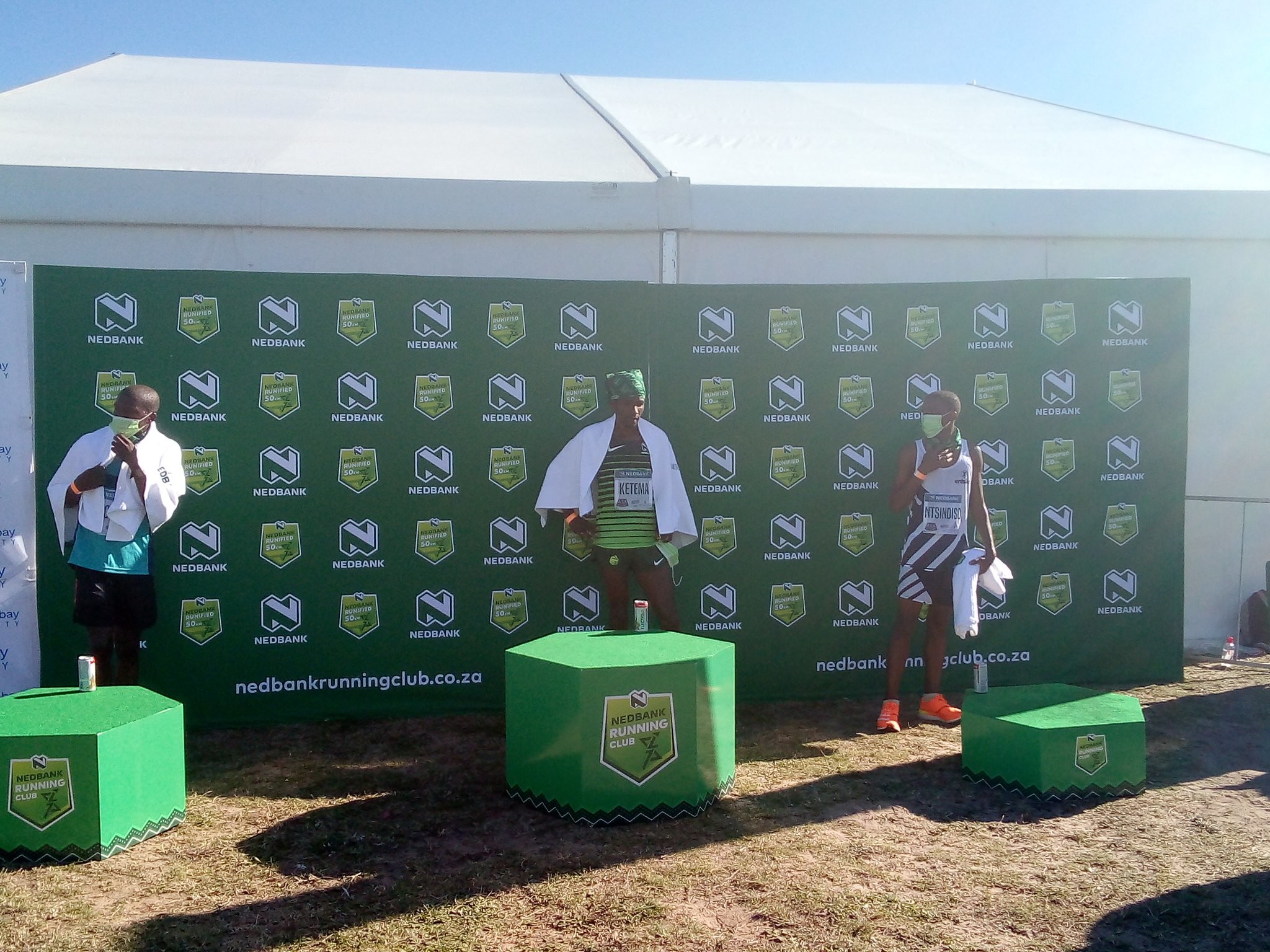
It’s important to note that Albertson’s world record, which he set in November 2020, came on a track, while Negasa’s run on Sunday was on the road. Ultrarunning world bests are unique in this sense, because while Albertson and Negasa ran on completely different surfaces, their runs count in the same category of the 50K in general, as the International Association of Ultrarunners introduced a rule that eliminated surface-specific records in 2014. In other World Athletics-sanctioned events, the surface comes into play. For example, the 5K and 5,000m world records both belong to Uganda’s Joshua Cheptegei, but they’re two different times.
Negasa’s run worked out to an average per-kilometer pace of 3:15 for the full 50K, which helped him top Albertson’s result by 23 seconds. He crossed the line in first place, and he was followed closely by Machele Jonas, who also beat Albertson’s record with a 2:42:15 run. Third went to Mphakathi Ntsindiso in 2:42:18, and in fourth place was Kiptoo Kimaiyo Shedrack, who just beat Albertson’s record in 2:42:29.

Irvette Van Zyl run
Had the Nedbank Runified race been held a couple of months earlier, Van Zyl would have broken the women’s 50K world record. Since the race took place in late May, though, Van Zyl was late to the party, and her time is second-best to Linden’s. When she ran her race in Oregon, Linden became the first woman to break three hours over 50K, and she smashed Aly Dixon‘s previous record of 3:07:20.
While Van Zyl didn’t manage to beat Linden, she did crush Dixon’s result with her 3:04:23 finish, which is the new South African 50K record. Behind Van Zyl was Lilian Jepkorir Chemweno, who finished in second place in 3:05:00, which is now the third-fastest 50K in history.
(05/24/2021) ⚡AMPby Ben Snider-McGrath
Canadian Cam Levins dips under Tokyo marathon standard with a week to spare
Canada's Cam Levins raced Sunday knowing it was his last shot. Two previous failed attempts lingered in the back of his mind. He ran in the rain, and all alone for the last 25 kilometers, conditions not conducive to fast times.
"(But) nothing was going to stop me today is what I told myself," Levins said.

The 32-year-old from Black Creek, B.C., finally dipped under the Tokyo Olympic standard in the marathon with just a week to spare. Levins, the Canadian record-holder in the event, ran two hours 10 minutes 30 seconds to win the S7 Marathon in the mountains in Styria, Austria.
The qualifying standard of 2:11.30 had to be accomplished before June 1.

Levins had been well on pace twice in the past seven months, in London in October, and then in Chandler, Ariz., in December. But both times, he hit the proverbial wall with a few kilometers to go. He dropped out in London and finished almost a minute off the standard in Arizona.
"In both (races) I was feeling fine until I very, very suddenly wasn't, could barely move," he said.
He was feeling "great" again on Sunday, "but I certainly thought about (the previous two attempts) as I was coming up to 34, 35K," Levins said. "I went past it and continued to feel great, and it was a pretty emotional moment getting through that and knowing that I was going to be OK."
Levins said a big part of the problem in his previous two attempts was his fuelling - not eating enough in the few days pre-race.
"I was a little concerned about putting on excess weight when I'm not training as much leading into the marathon, so the week before the race, I was careful about what my intake was," he said. "(This week), I just kind of threw that out the window, and said, 'You know what? I'm not going to worry about that.'"
He tested out his theory in a fast half-marathon time trial last month.
Sunday's conditions on an empty Austrian highway - it's currently under construction - made his performance all the more impressive.
t rained most of the way. At the 25-kilometer mark the rain was coming down in sheets.
And neither of his two pace-setters were keeping proper pace. One dropped out just five kilometers in. The other stepped off the course when Levins passed him with more than 25 kilometers left to go.
"I had to go past 17 or 18 but he was already off pace and I needed to go. So a lot of that race was by myself," Levins said. "So, I think I have lots left in the tank."
The time doesn't guarantee Levins a spot on the Tokyo Olympic team, as four Canadians have qualified and Canada can only take three.
Trevor Hofbauer is the only Canadian guaranteed a spot after winning the Canadian championship. Ben Preisner (2:10.17) and Tristan Woodfine (2:10.51) have also run the Olympic standard.
"I hope I'm selected," he told The Canadian Press from Austria. "But I definitely feel like I've done everything that I can today, and I'm proud of my effort no matter what. Hopefully this gets me on the Olympic team. I definitely did everything I could. And I'm very happy and proud of that."
(05/24/2021) ⚡AMPby Canadian Press
Tokyo 2020 Olympic Games
Fifty-six years after having organized the Olympic Games, the Japanese capital will be hosting a Summer edition for the second time, originally scheduled from July 24 to August 9, 2020, the games were postponed due to coronavirus outbreak, the postponed Tokyo Olympics will be held from July 23 to August 8 in 2021, according to the International Olympic Committee decision. ...
more...Marathon runner completes epic 110-day challenge running the same marathon course since February 1
A runner has finished an epic challenge of completing 110 marathons in 110 consecutive days.
Gary McKee ran the same 26.2 mile (42km) circuit around his home in Cleator Moor, Cumbria, UK every day since 1 February, in memory of his father.
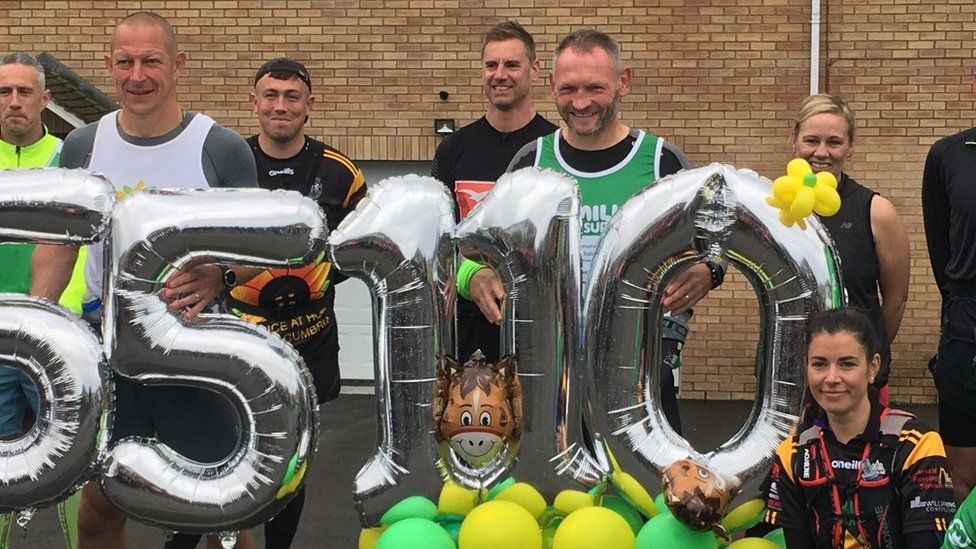
The 51-year-old has raised more than £110,000 for Macmillan Cancer Support and Hospice at Home West Cumbria, smashing his initial target of £10,000.
Cheering crowds welcomed him home as he crossed the finish line.
He said he was pleased the town had turned out to greet him.
"I enjoyed the moment. I did look up at the sky and think of the people who you have been running for and the people you run in memory of, and there have been lots of them. I thought about my dad," he said.
"It's a wonderful feeling because everyone had a smile on their face. It has captured the imagination of the town of Cleator Moor and further afield."
Initially after completing the challenge he was holding a cup of tea to keep warm, but he said he was "looking forward to a beer".
Mr McKee is no stranger to challenges - he has previously climbed Mount Kilimanjaro, trekked through New Zealand and ran from Land's End to John O'Groats.
He was inspired to fundraise for Macmillan after his father was diagnosed with cancer in 1997. He died from an unrelated illness in 2003.
His 16-year-old son Alfie and nephew Stuart McKee have also been taking part by cycling 110 marathons in 110 days, and a younger son, Beau, and daughter Minnie have done their own running challenges.
He has also been accompanied by friends Kevin Hetherington, who took part in 55 marathons, and Michael Watson, who joined him for 44.
Mr McKee, who would often complete a marathon before starting his shift at Sellafield, said he would not necessarily be sorry to end the challenge.
Speaking before his final run he described it as an "emotional day".
"I know that it's coming to an end and people tend to think you can't wait to get finished and have a rest," he said.
"But the way I see it is that when you finish donations stop coming in and that's a little bit of a sad part of it."
Sue McDonald, Macmillan fundraising manager for Cumbria, said: "To smash out 110 consecutive marathons is an incredible feat.
"The support from Gary's children and the community has been phenomenal - and to get messages of support from Mo Farah, Sally Gunnell and yesterday from Kevin Sinfield has given everyone such a boost over the many long days.
"There's quite a few tears of joy and pride today - and with good reason."
(05/23/2021) ⚡AMPby BBC
Japanese study finds just two COVID-19 cases out of 1,118 running events
In November, the Japanese Association of Athletics Federations (JAAF) released a study looking at the link between in-person running events and COVID-19 cases. At the time, the study focused on 787 races held in Japan between July and October, and just one COVID-19 case was found. The JAAF has continued with this research, and as Japan Running News (JRN) reports, the numbers are still incredibly low, and while the study now includes 1,118 races, only one other COVID-19 case has been linked to a running event, bringing the total to two.
The updated JAAF study expanded its scope to look at races held between April 1 of last year and March 31, 2021. This added many more races to the study, with a total of 1,044 track meets and 74 road races covered. These 1,118 events featured 750,389 participants (including runners and race officials), two of whom tested positive for COVID-19 within two weeks of the races they attended.
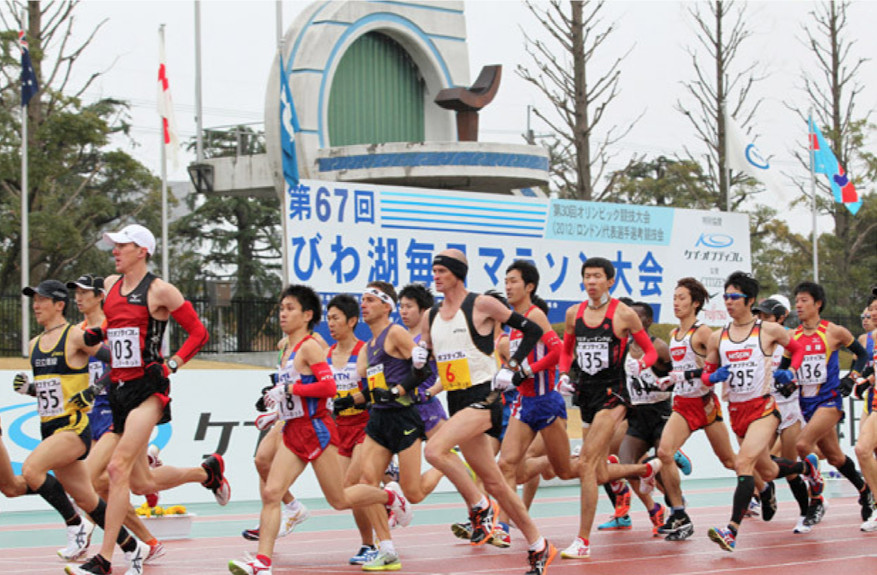
Track races accounted for most of the race participants in the year-long study period, with 568,271 runners and 147,942 officials. Of that group, one person tested positive for COVID-19. The other positive case came from one of Japan’s road races, which collectively hosted 25,936 runners and 8,240 officials.
An important note in the study is that more than half of these races did not allow spectators. There were some races that allowed fans, but most didn’t, which likely helped keep COVID-19 cases down. JRN adds that vaccinations only began in mid-April in Japan, meaning the study was in no way influenced by the vaccines’ effects.
This study is good news for the International Olympic Committee and athletes worldwide hoping to compete at the upcoming Tokyo Games, as it helps to show that sporting events (or running races, at least) can be run safely during a pandemic without becoming super-spreader events. Of course, the Olympics will be a much bigger affair than any of the races included in the study, but the JAAF’s findings are still reason to be hopeful.
(05/23/2021) ⚡AMPby Running Magazine
Eliud Kipchoge wants to run ‘all major marathons’
Boston, New York, and Tokyo are on the GOAT marathoner's bucket list
Eliud Kipchoge has revealed he would like to run “all major marathons” in the remainder of his career.

Speaking to Gordon Mack on the Flotrack podcast, the GOAT marathoner said because he has already run Berlin, London, and Chicago, the remaining major marathons on his “bucket list” were Boston, New York, and Tokyo.

He said because he plans to focus firstly on the Tokyo Olympics this summer, before a busy autumn of marathons, he would “close” his bucket list before “jumping in” again on January 1 2022.
Kipchoge also suggested he might be interested in dabbling in ultrarunning for a fresh challenge.
“I would love to try 80km, 60km. I need to go to California and hike for six hours," he said. He added that he was looking forward to the next phase of his running after his professional career is over: “I’m really excited to approach life in another dimension,” he said, “to go up the mountains with different people, with different lifestyles.”
He said, “I’m really excited to instil inspiration in the youth of the whole world. To travel along the big cities, in every country if possible, to send positive vibes.”
Kipchoge was speaking to Flotrack ahead of taking part in NN Running’s MA RA TH ON virtual marathon relay this weekend. Like others taking part in the virtual race, he will run a 10.5km relay on May 22-23 which will be added to the efforts of three teammates to make up the full marathon distance.
(05/23/2021) ⚡AMPby Runner’s World
TCS London Marathon
The London Marathon was first run on March 29, 1981 and has been held in the spring of every year since 2010. It is sponsored by Virgin Money and was founded by the former Olympic champion and journalist Chris Brasher and Welsh athlete John Disley. It is organized by Hugh Brasher (son of Chris) as Race Director and Nick Bitel...
more...Canadian Ultrarunner Runs 1,000K in Fewer Than 10 Days to Win the Great Virtual Race Across Tennessee
After finishing in 148th overall in last year’s race, Morris was on a mission to win.
For the second year in a row, the Great Virtual Race Across Tennessee (GVRAT) has been won by a Canadian, and once again in a record-breaking performance.

Varden Morris, 50, who lives in Calagary, Alberta and is from Jamaica, completed the 1,000K distance (a little more than 621 miles) in 9 days and 23 hours, averaging more than 100K a day. Morris beat out fellow Canadians Matthew Shepard, 33, and Crissy Parsons, 40, who finished in 13 days and 15 days, respectively.
“Honestly, I’m in disbelief,” Morris told Runner’s World. “Just hearing stuff on social media about the magnitude of what I just did. I knew it was possible but after finishing and realizing that not many people have done what I’ve done, it baffles my mind.”
Last April, Barkley Marathons creator Gary “Lazarus Lake” Cantrell came up with the idea of hosting a virtual ultra, giving people four months to run twice the distance of the Last Vol State 500K—and more than 19,000 runners signed up. One of them was Morris, who went out with the fastest of the bunch, but due to lack of training, he picked up a few injuries and was forced to slow down. He finished 148th overall.
After that, Morris decided he wanted to win the 2021 race, so he studied the training methods of successful ultrarunners and increased his mileage. By the start of 2021, he was running about 14 miles a day for a week before upping that mileage by four miles to his daily total until he reached a max of 36 miles a day. In March alone, he covered 965 miles.
On May 1, when GVRAT finally began, Morris set out to not only win, but to also finish in fewer than 10 days.
“My strategy was to run as close to possible to the same average distance every day,” he said. “Most people try to put in most miles in the first few days. My plan was to be consistent. I went a little above my average the first day by 10 percent, but I was doing mostly the same miles every day.”
Morris ran around his neighborhood in Calgary, with a routine of running for six hours and resting for five. He rotated through three pairs of Asics shoes, and for fuel, he focused on solid foods like boiled eggs with veggies, Jamaican sweet potato pudding, toto (a Jamaican pastry), and fruit, such as grapes, bananas, oranges, and watermelon.
No day was easy. Morris said he often found himself contemplating if he would complete the run he was on. On the first day, he picked up a groin injury that lasted a couple days. Another day, he ran through rain and hail with winds over 25 mph.
“Every minute was important,” he said. “Each day was more and more difficult. There was a sense of uncertainty if I would finish. It wasn’t something easy. It was something very difficult. We just took it one day at a time.”
When Morris woke for his final push of 44 miles, he was hurting but he knew he was ahead of his fellow Canadians. His wife, who also served as his crew chief, joined him for the first 15 miles of that final push, and his daughter ran the final four miles with him.
Celebrations included a big meal at home of meat and veggies and some non-alcoholic wine. With the record in hand, Morris plans on running back across Tennessee; part of the GVRAT format allows runners to run back across Tennessee as many times as they like during the four-month period.
Morris said he will be taking it much slower back across.
During last summer’s GVRAT, Cantrell faced criticism when he deleted a GVRAT finisher’s post on Facebook that described the runner’s experience receiving racist and homophobic slurs during his runs.
(05/23/2021) ⚡AMPby Runner’s World
Twenty-one dead as extreme weather hits ultramarathon in China
Hail, freezing rain and high winds hit runners at high-altitude, 100km race in Yellow River stone forest in Gansu province
Twenty-one people have died after hail, freezing rain and high winds hit runners taking part in a 100km (62-mile) ultramarathon in a mountainous part of northern China.
More than 700 rescuers and army personnel used thermal-imaging drones and radar detectors to try to find runners caught by the storm in the race in Yellow River stone forest near Baiyin in north-western Gansu province, officials said.
At around noon, the high-altitude section of the race between 20-31km was suddenly affected by disastrous weather. In a short period of time, hailstones and ice rain suddenly fell in the local area, and there were strong winds. The temperature sharply dropped,” Baiyin city mayor, Zhang Xuchen, said on Sunday.

Rescue teams were dispatched but at around 2pm, weather conditions worsened and the race was immediately called off as local authorities sent more rescuers to help, Zhang added.
“This incident is a public safety incident caused by sudden changes in weather in a local area,” he said, adding that provincial authorities will further investigate its cause.
Temperatures in the mountainous terrain dropped further overnight on Saturday, Xinhua news agency said, making search and rescue “more difficult”.
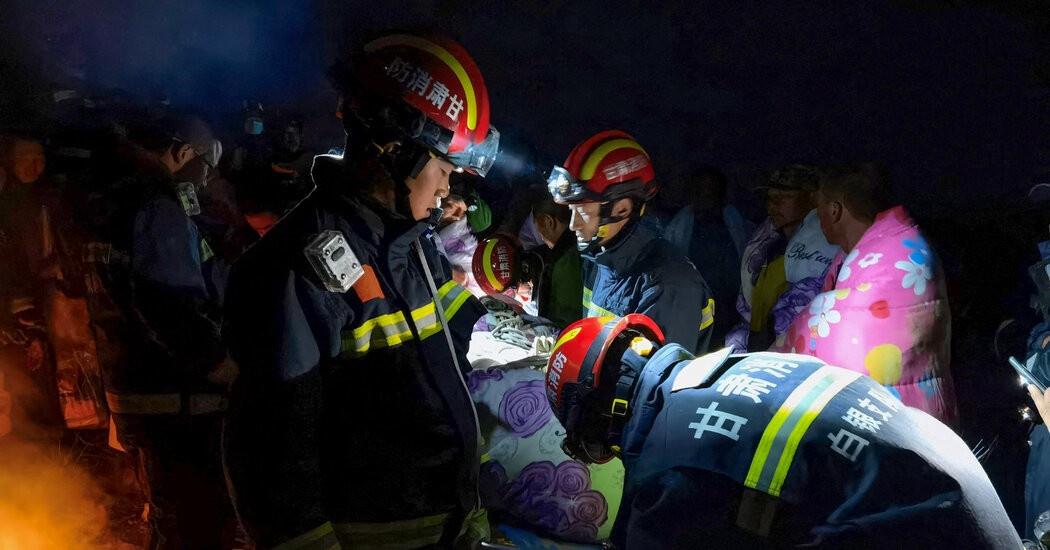
A “significant” drop in temperatures had been forecast in most parts of Gansu over the weekend but there was anger on Chinese social media that officials had failed to plan for bad weather.
“Why didn’t the government read the weather forecast and do a risk assessment?” one commentator wrote.
“This is totally a man-made calamity. Even if the weather is unexpected, where were the contingency plans?”
At the news briefing on Sunday, Baiyin officials bowed and apologised, saying they were saddened by the tragic deaths of the runners and that they were to be blamed.
The Gansu provincial government has set up an investigation team to further look into the cause of the deaths, the People’s Daily reported.
Gansu, one of China’s poorest regions, borders Mongolia to the north and Xinjiang to the west.
Yellow River stone forest is famous for its rugged mountain scenery marked by stone stalagmites and pillars, and is used as a location in many Chinese television shows and movies, according to the China Daily.
Its rock formations are believed to be 4 billion years old. Xinhua said a total of 172 people were taking part in the race.
(05/23/2021) ⚡AMPMo Farah has revealed his daily routine as he trains for the Tokyo Olympics this summer
On a typical day, Farah said, he’ll have a little toast for breakfast, before going out for a 10 or 12 mile run around 9 or 9.30 am. When he has come back and showered, he might answer a few emails before taking a nap. In the afternoon he’ll go for a light jog, covering five or six miles. In total he will usually run around 17 to 18 miles, apart from Sundays when he will often do a long 20 mile run.
At the time of recording, Farah was taking part in a training camp in Flagstaff, Arizona, 7,000 feet above sea level. Farah said a handful of fellow Team GB athletes were due to join him there, including Laura Muir and Andrew Butchart.

Although he is the reigning Olympic champion, Farah still has to qualify for the games at the Müller British Athletics 10,000m Championships in Birmingham on Saturday, June 5.
Asked about his high-mileage training regime, Farah told Wicks, 'You have to be able to put in the work.' 'Anything is possible in life if you condition yourself, condition your body – you can get through it.'
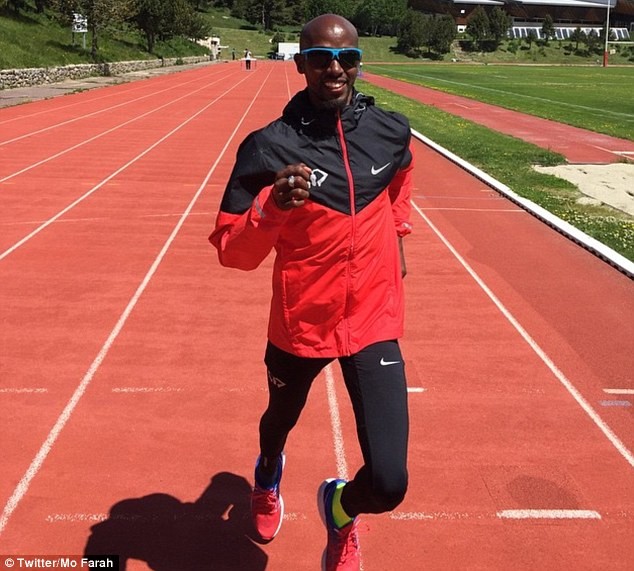
He added: 'With me, I have to run that kind of distance and condition my body. I’m not just going to turn up at the Olympics and try and win off the back of one month, two months, three months – it’s the whole leading up to it. Condition your body, get yourself in the best shape that you can.'
Describing how he maintains his focus, Farah described himself as 'an addict.'
He said, 'When you go out for a run, or when you do a session, you feel that relief – that’s what drives me. Having so many people behind you and knowing you’re doing it for your country, that’s what keeps me going.'
He added, 'I think what keeps me going to this day is 2012 – what I did in 2012 and how it happened – that bit drives me every day.
'Over the years I’ve learned from races and making mistakes – it’s OK to make mistakes. If you get it wrong in a race, it’s OK! As long as you learn what went wrong, it’s easier to fix it' Farah told Wicks.
(05/22/2021) ⚡AMPby Jacob Moreton
Tokyo 2020 Olympic Games
Fifty-six years after having organized the Olympic Games, the Japanese capital will be hosting a Summer edition for the second time, originally scheduled from July 24 to August 9, 2020, the games were postponed due to coronavirus outbreak, the postponed Tokyo Olympics will be held from July 23 to August 8 in 2021, according to the International Olympic Committee decision. ...
more...2021 Gold Coast to be biggest mass event in Australia
The Village Roadshow Theme Parks Gold Coast Marathon will be the largest mass-participation event in Australia since COVID-19 decimated the event and festival industry across the nation more than 12 months ago.
With the lure of an all-Aussie line-up on the podium this year the elite athlete participation is looking exceptional with qualifying opportunities for World Championships 2022 and Birmingham 2022 Commonwealth Games at stake.
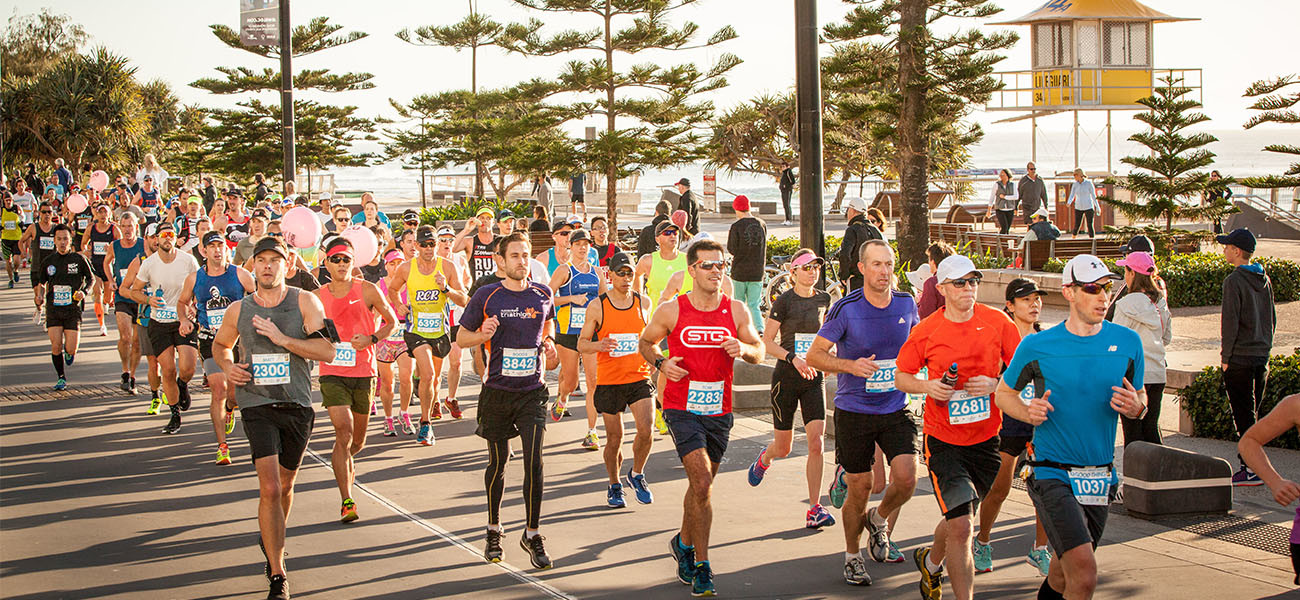
Australians haven’t enjoyed a win in the Gold Coast Marathon since 2009 when Lauren Shelley took out the female 42.195km event and in 2006 when Lee Troop won the men’s event.

Tourism and Sport Minister Stirling Hinchliffe welcomed the return of the Gold Coast Marathon.“We know big events like the Gold Coast Marathon are important for supporting local jobs and our economic recovery,” Mr Hinchliffe said.
“The Gold Coast Marathon is shaping up as significant national event which is great news for accommodation providers and the Gold Coast’s many world-class holiday experiences.”
Events Management Queensland CEO, Cameron Hart said they were anticipating between 16 – 20,000 runners this year for an event that might look and feel a little different to previous years, but it would be a fitting celebration of the return of community and mass participation events.
“We have had to make some changes to accommodate the implementation of a COVID-safe plan however, I think people understand the need for some precautions in the best interest of everyone’s health and wellbeing.
“One of the biggest changes has been moving the ASICS half marathon from Sunday morning to Saturday morning. This means the number of people in the precinct and on the course is considerably less with the Village Roadshow Theme Parks Marathon still kicking off on the Sunday morning, but a little earlier than in previous years.
“I am delighted that we have already attracted some of Australia’s greatest marathon and wheelchair marathon and half marathon athletes. With their sights on wearing the green and gold in 2022, we are set for some very serious racing.”
Destination Gold Coast and Events Management Queensland Chairman, Paul Donovan said whilst they would certainly miss the international competitors at this year’s event the fact that Australians had really embraced the opportunity to compete again would make it a spectacular experience that will revitalise the event industry.
To accommodate the mailing of all participant race kits and cater for changes in supply chains entries for the Village Roadshow Theme Parks Gold Coast Marathon and associated races will close at 11:59pm on Friday June 4, 2021.
(05/22/2021) ⚡AMPGold Coast Airport Marathon
The Gold Coast Airport Marathon is held annually in one of the most popular holiday destinations in the world. It is Australia’s premier road race and was the first marathon in the country to hold an International Association of Athletics Federations (IAAF) Road Race Gold Label. The event is held on the first weekend of July and attracts more than...
more...Study finds that 28 per cent of runners got started running during the pandemic
A recent study from RunRepeat found that 28 per cent of current runners got started in the sport during the pandemic. The study surveyed close to 4,000 individuals, and it found out more about these new runners and what they want out of running. From training motivations to race preferences, their answers may be a surprise to veteran runners. With that said, when the pandemic is considered, their responses make a lot of sense.
Race participation

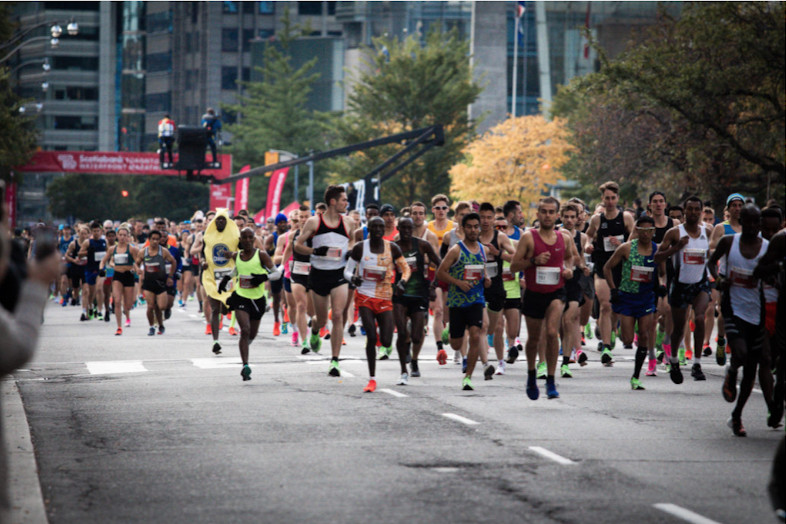
While most “pre-pandemic runners,” as RunRepeat refers to them, love to race, about half of new runners aren’t too keen on the idea of competition. Of those surveyed, 63 per cent of pre-pandemic runners plan to race (either virtually or in person) in the coming 12 months, but just over 50 per cent of new runners said they will do so.
Of the runners who said they will race at some point in the next year, a whopping 85 per cent of pre-pandemic runners said they hope that event will be held in person. The new runners who said they would race, though, don’t mind virtual events as much, and only 68 per cent of the group said they want to run an in-person race.
That leaves a relatively large chunk (about 31 per cent) of new runners who would prefer to compete in virtual races. RunRepeat found that new runners are 115 per cent more likely to run a virtual race than pre-pandemic runners. At first, this might sound ridiculous to pre-pandemic runners, but it makes sense if you think about how these new runners entered the sport.
New runners didn’t get into running for races, and it was instead used as a way to pass the time and keep fit while gyms were closed around the world. Plus, new runners started running when their only competition option was to race virtually, and with no in-person events to compare these runs to, they prefer the virtual format.
Running motivations
Motivations to run also vary between the two groups. About 34 per cent of pre-pandemic runners are motivated by competition, but that only drives 22 per cent of new runners. Social interaction is another reason to get out for some people, but this only excites 11 per cent of new runners compared to 16 per cent of pre-pandemic runners. This makes sense, too, as new runners weren’t permitted to run together, so they have yet to experience the fun of group workouts.
There’s no denying that we have experienced a running boom in the past year or so, and that’s due to the pandemic. It was easy to understand why so many people picked up running during lockdown (it was one of the only activities people could do), but it wouldn’t have been as easy to guess why these new runners have stuck with the sport.
(05/22/2021) ⚡AMPby Running Magazine
HOW ULTRARUNNER TOM EVANS ESCAPES HIS COMFORT ZONE
The ultrarunner started his sporting career for a bet, and discovered a love of pushing his limits that has kept him moving ever since.
“My thought process can best be described as ‘minimal’,” laughs Tom Evans, describing his 2017 entry into the six-day, 251km Marathon des Sables, held annually in the Sahara Desert. As well as being possibly the toughest race on the planet, it also happened to be Evans’ first. “I knew it was the hardest race out there, and I thought there was no point in doing the easy ones,” he says. “I’d jump straight in at the deep end.”
Though he lacked any formal training, Evans’ self-belief carried him to an unbelievable third place – the fastest time run by any European in the race’s history – and, naturally, skyrocketed him into the world of professional ultrarunning. “I was always sporty,” explains the 29-year-old. “I represented England at rugby, hockey and athletics events while at school. Looking back, I wasn’t necessarily the best, but I always tried the hardest. After school, I realised I didn’t want to go to university, so at 18 I joined the army. I’d always felt I had something to prove, and in the army an easy way to do that was by keeping fit. The army is an endurance-based organisation, which suited me really well.”
After the Marathon des Sables, Evans capped off a successful streak by winning the 101km CCC race at the 2018 Ultra-Trail du Mont-Blanc. The following year, he left the army to pursue running full-time, and he hasn’t looked back. Next on his schedule is Red Bull’s official charity partner event the Wings for Life World Run on May 9 – a unique race with no finish line, in which runners compete against a ‘catcher car’ until it overtakes them. This year’s participants will still compete at the same time, but – due to COVID-19 restrictions – they’ll run against a virtual car, via an app.

It’ll be different from Evans’ past experiences at the annual event, but he’s a master of adaptability. Currently holed up in Loughborough with his fiancée, professional triathlete Sophie Coldwell, he’s keeping busy by switching snowy trails for road running and has even smashed the Three Peaks challenge on a treadmill. Here’s how Evans keeps pushing forward...
The Red Bulletin: You came third in the Marathon des Sables after entering for a bet. How?
Tom Evans: My friends did [the race] in 2016 and finished in the top 300. I thought I could do better, and over a few beers they bet me I couldn’t. I signed up the next morning. There’s a lot of crossover with the military, because you’re sleeping outside under the stars and pushing yourself to your limits every day. Through running the race, I discovered this ability to suffer for a very long time in the heat. Two years later, I left the army to become a full-time professional athlete.
Ultrarunning is one of the most punishing sports. Is it all down to this natural ability?

No, I train very hard and I get used to suffering. I know in any race there will come a point when I’ll want to stop. When I get there it’s like, ‘Right, I knew it was going to happen, so now’s the time to embrace it, but also know that the minute after you stop, it’s going to stop hurting.’ I think I can withstand a lot, but I want to know how long I can actually keep feeling uncomfortable for.
Many people struggled to find focus during lockdown. What kept you motivated?
It’s very easy to keep a habit once you have it, but it’s very difficult to start the habit in the first place. I think people go from never running at all to loving it. Then there’s the other side of that: as soon as you do stop something like running, it’s very difficult to start again. So, for me, it’s about keeping as much consistency as possible. I always set mid-term and long-term goals – I’m very goals-based. Having gone from boarding school to the military, I like knowing what I’m doing.
Typically I drive to the Peak District or Snowdon or the Lake District, where there are phenomenal trails, but I wasn’t able to do that in lockdown. So I started running from my door instead. Road running suits me well, because it’s easier to collect data on your run. You don’t have to pigeonhole yourself into a certain distance or event. I run because I love running, and it’s a brilliant thing to be able to do.
What’s your plan for the Wings for Life World Run?
Because it’s a charity event, my goal is to raise as much awareness for spinal cord research as I possibly can by putting in a performance that people talk about. It’s going to be a long, uncomfortable run, which is my sweet spot. I think the best way people can physically prepare is to go on the website and play around with speeds; look at how far you can get [while] running at a certain pace. Because it’s on the app, you can challenge your friends virtually, which keeps the competition alive.
(05/22/2021) ⚡AMPIncreasing Endurance With Easy/Moderate Long Runs
You may have heard the training saying: "Easy runs easy; hard runs hard." I think there's an important addition to a well-rounded training plan, particularly for trail runners: "Medium runs medium."
The strict polarization between easy and hard serves a purpose. The grey area between aerobic threshold (an effort you can sustain for a few hours or more) and lactate threshold (around an hour, with variance) is a bit like a vacation to Cancun. It's fun to visit, but stay there too long and it starts to wear out its welcome, and before long you'll be covered in sunburn welts while Ted Cruz walks by in the saddest Hawaiian shirt. Countless running careers have been undercut in that grey area.
But that doesn't mean the grey area is all bad.
It gets back to the old correlation versus causation conundrum. Athletes that do their easy runs with too much effort likely have an overall approach to training that is less sustainable. They chase the quick gains and more impressive Strava files from moderate running, get some of those quick gains, then assume that those gains will continue. At that point, the transition from rapid initial gains to marginal long-term gains pulls them out to the deep end. They keep doing many moderate runs, see less progress, fail to adapt their training to a more polarized approach, and eventually find themselves treading water via injury or stagnation.
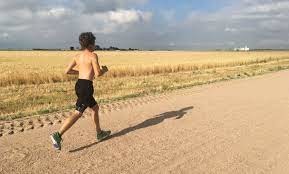
As discussed in this article on the science and art of easy running, that model plays out every year in college programs across the country. Faster easy running often coincides with faster racing, leading to an association that can undercut growth after the aerobic, endocrine and nervous systems rebel against the chronic stress. Or in athletes that start their running journey later in life, any run might be moderate at first, creating an understanding that all running should be moderate even as fitness grows. That's when you'll sometimes have success with interventions involving heart rate caps, since excessive moderate running can undermine both low-level aerobic efficiency and upper-level aerobic capacity.
The key word there is "excessive"-we don't need to throw the moderate-running baby out with the polarized-training bathwater. In fact, I am going on the record to say I am against throwing out babies or bathwater altogether. I am brave to take that stand, thank you for saying so.
The key word there is "excessive"-we don't need to throw the moderate-running baby out with the polarized-training bathwater. In fact, I am going on the record to say I am against throwing out babies or bathwater altogether. I am brave to take that stand, thank you for saying so.
In coaching, my wife Megan and I rarely program specific "moderate" days because these grey-area runs can be counterproductive when they are inefficient, like when completed on sore legs or during periods of high life stress. That is why doing moderate running all the time can be so negative-if an athlete feels like crap and forces the pace, it becomes a hard run that can tear them down. Instead, we use the looser term "easy/moderate."
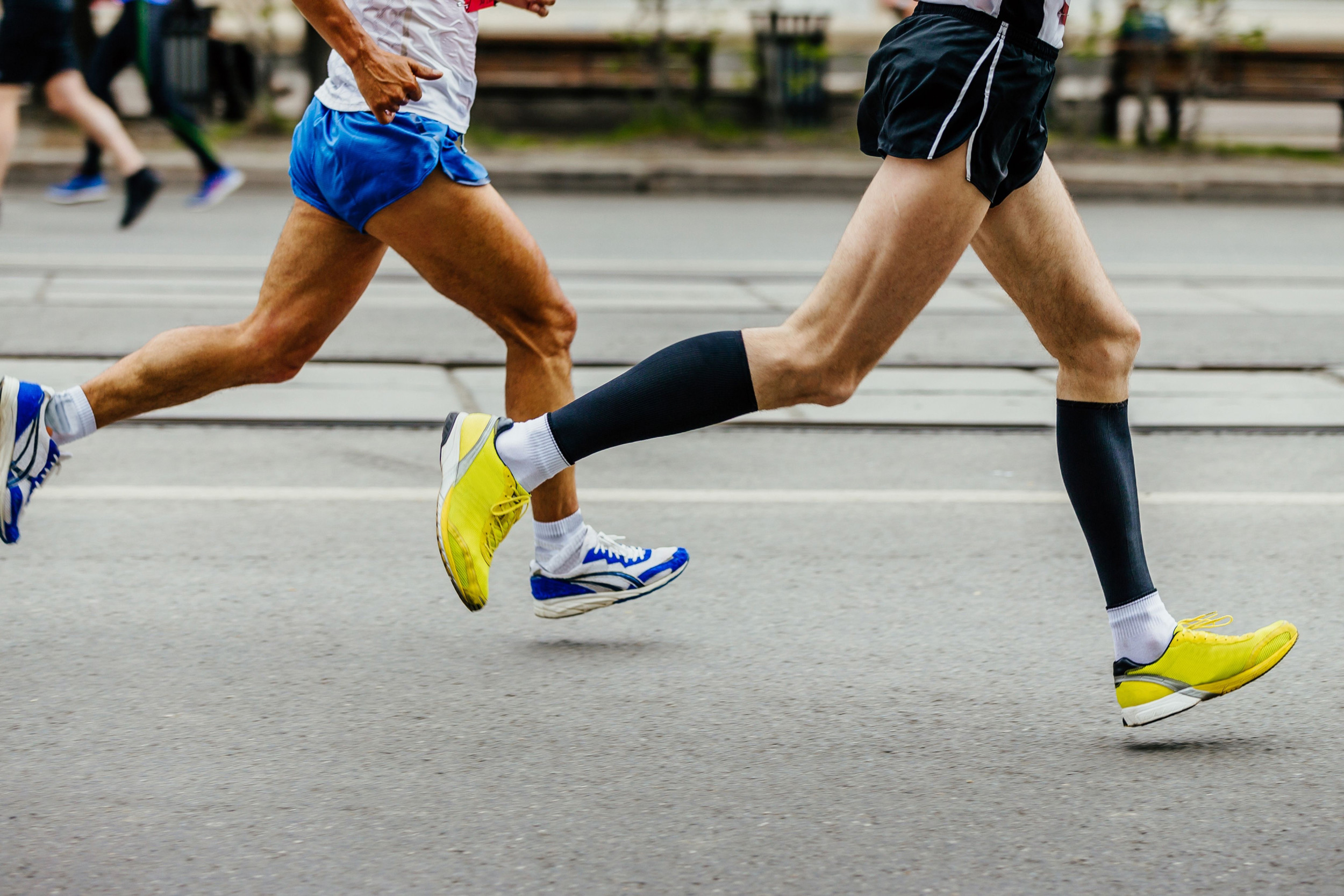
Easy/moderate definition
Easy/moderate runs involve starting very easy. As the run progresses, athletes have permission to find ease of motion without urgency, while covering ground with smooth flow on flats/downhills and efficient purpose on uphills. The runs are faster if an athlete feels good, slower if they don't. Heart rate may be below aerobic threshold on downhills and flats, and closer to lactate threshold on climbs. Essentially, easy/moderate runs allow training to be dictated by the body and brain, rather than obligation to numbers on a plan or compulsion to push each day to the limit. Two major physiological principles are important to apply easy/moderate runs.
Principle One: Steady running around aerobic threshold can have major benefits for endurance, or major negative effects when forced
Coach Renato Canova works with many of the best marathoners of all time, and these types of steady effort long runs are key to his system. In his book Marathon Training: A Scientific Approach, Canova refers to steady effort runs as being around what he calls aerobic lipidic power, essentially meaning the effort is both fast and sustainable. His training system for marathoners revolves around increasing that power so that output at lactate threshold and aerobic threshold get very close together. That's why the top marathoners don't look like they're breathing all that hard at 5-minute miles-they have wildly impressive output around aerobic threshold.
Steady runs may improve lipid oxidation at higher outputs, whereas purely easy runs don't always have the same benefit. In addition, these runs could improve the power and recruitment of Type-I slow-twitch muscle fibers, while also spurring the production of mitochondria and capillaries. And since the runs are faster, the muscular output is greater, leading to more strength.
But there are downsides too. Go too hard, and some of those aerobic benefits erode away, while endocrine and nervous system stresses go sky-high. A steady run forced on tired legs leads to injury risk, with little benefit other than mental toughness. And if you're after mental toughness through increased discomfort, you could just stick your finger in the trash compactor.
The goal is to run with as much pace as possible with as little effort as possible, since that is when running economy improves the most. And we don't want to have to call a plumber to clean the trash compactor.
We frame these runs as easy/moderate to emphasize that athletes should err on the side of relaxed. The goal is to run with as much pace as possible with as little effort as possible, since that is when running economy improves the most. And we don't want to have to call a plumber to clean the trash compactor.
Principle Two: In trail running, athletes must train for the specific musculoskeletal demands of running efficiently over varied terrain
Steady runs are especially important for marathoners, who often use long runs to lock into faster paces. Meanwhile, easy/moderate runs are geared toward trail runners who are running over varied terrain, with different paces, outputs and even form depending on the trail. The trail athletes face a much wider range of musculoskeletal and biomechanical stresses, emphasizing the ATHLETE part of being a runner. Easy/moderate runs build specific adaptations to uphills and downhills, particularly during long runs that start to approximate race pace for ultra runners. We like athletes to apply five rules to add some structure to these unstructured effort days.
Guideline One: Start easy for the first 10 minutes
Let the body kick into a fully aerobic gear. No pace is too slow, like all easy runs.
Guideline Two: Let your body dictate the effort by finding ease of motion, without urgency
After those 10 minutes, listen to your body. What is it saying? "I feel good and fresh" = time to let the effort roll. "I am a bit ragged" = take it easier. "Five, five dollar, five dollar foot loooong" = go to Subway post-run. The cue of finding ease is what I like athletes to lock into in ultra races, and easy/moderate long runs are great for practice.
Guideline Three: Flow on the downs and smooth on the flats
On downhills, heart rate will be lower, so it's a good time to practice running with focused, purposeful flow. As you adapt to the musculoskeletal demands, downhills will become free speed. On flatter terrain, embody smoothness with relaxed arms and no urgency.
Guideline Four: Efficient purpose on the ups, with the option to progress effort on good days
Easy/moderate runs can become extra effective workouts for trail runners due to the uphill stress. If you walk most of the ups in training, try to run a bit more. If you walk some of the ups, try to run all but the steepest grades. If you rarely walk, add a bit more power into your stride. For all athletes, on days you feel good, some of the steeper ups may approach lactate threshold effort, and that's great for fitness. Just make sure you're not fading too hard as the run goes on, which may indicate pacing that exceeds your current fitness levels.
Guideline Five: Fuel well
Because easy/moderate runs are higher overall effort, they are also higher risk. Fueling is key to improve endurance and adapt to the training you are doing, while also mitigating some of that risk.
For our athletes, easy/moderate long runs on trails are a staple outside of base period. Sometimes, they will even include 20-30 minute moderately hard tempo runs after a warm-up, which is how we can spur more long-distance adaptations without doing 30 or 40 mile runs in training. Every 4-6 weeks, a mid-week trail run may be a similar approach, often in aerobic build weeks.
Easy/moderate means that you're giving your body the love and respect to let it tell you what it's ready for. Use these runs in the context of a well-rounded training plan with high-end speed and low-end aerobic development, and your body will probably be telling you that it's ready for race-day breakthroughs.
(05/22/2021) ⚡AMPby Trail Runner Magazine
Five tips to help you deal with pre-competition nerves
Feeling anxious before a major competition is normal. Our fight-or-flight response has helped us humans to survive all these years. Nowadays, it helps us to be ready for a major physical challenge by increasing glucose in our blood and making us feel alert.
But pre-competition nerves can become excessive to the point of having a detrimental effect on your performance. Thankfully, though, there are plenty of strategies which we can use to dampen down the effects of anxiety before competition.
During the many years I competed as an elite athlete, I found myself feeling anxious before major competitions all the time. Through experimenting and practice, I honed a pre-race routine which helped me to feel calm, yet focused completely on delivering my all in the forthcoming race. But everyone is different, and what works for one person will differ from the next. What matters is what works for you, so it’s worth spending time testing out various ways of dealing with nerves. When you arrive at a strategy that works, write it down and stick with it!
My tips for managing nerves are as follows:

1. Plan ahead on practicalities
Logistical mishaps on, for example, transport and your kit are things which, if they go wrong, generate high anxiety. Eliminating this as a potential source of nerves is an easy win, by being fully on top of all these things in advance. During the current pandemic, complying with Covid-safety measures makes being organised about logistics even more important.
2. Just do your best
Worries about how you will perform compared to your rivals or others’ expectations can be debilitating. But ultimately, all you can do is your best, on any given day, whatever level that is. If you give it 100% no matter what, you can walk away knowing you could not have done better, regardless of the result. Focusing on this is a good strategy for banishing anxieties about comparisons. Spending a few moments visualising yourself delivering a good performance can also help.

3. Less is more
Immediately before an event, rest is vital. So resist the temptation to squeeze in more training, hoping that a final training session will help on competition day. Training takes time to have an effect and last-minute exertion is more likely to tire you out than make you perform better. If you are well-rested, you are more likely to perform well.
4. Have a goal
Plans do not always work out, but simply having a goal gives you something to focus on if you feel anxious before an event. Goals can be adjusted during an event – they need not be set in stone.
5. Transport yourself away
Finding an absorbing activity like reading a gripping novel or watching an exciting film will stop you from over-thinking the event or worrying excessively. Activities like this can be mentally refreshing and bring you to the start line feeling excited and ready to produce a massive physical effort.
The fight-or-flight response means we have peaks and troughs in our states of preparedness for any major challenge. To be on your top form when necessary, you must allow time and space for the troughs, i.e. for resting and decompressing. So along with learning how to manage nerves before competition, always make time for a good rest afterwards to recharge.
(05/22/2021) ⚡AMPby World Athletics


